Wondrous Scotland offers visitors many beautiful & interesting sights. The charming port town of Oban, although not as well-known as Edinburgh or the Scottish Highlands, certainly deserves to be included on all “full country” itineraries.
Known as the “Gateway to the Isles,” Oban offers delightful day trips by ferry to three islands of the Inner Hebrides – large & hilly Mull, spiritual Iona (with an historic abbey), and small Staffa, populated by puffins in the summer.
Located on Scotland’s west coast, Oban conveniently lies between the Lowland cities of Glasgow & Edinburgh and the not-to-be-missed sights of the Highlands (Glencoe, Isle of Skye, and Inverness).
My Visit to Oban / About This Blog Post
I spent 2 ½ weeks in September 2024, touring all over Scotland with good friends Carol & Eddie. We mostly toured by car, once out of the big cities. We used the excellent Rick Steves guidebook – “The Best of Scotland” – to plan our trip & perfectly guide our way.
On Rick’s recommendation, we spent 2 nights / 1.5 days in Oban. This allowed time to explore the town on our arrival day, including taking one of Scotland’s best whiskey tours.
The next day, we took the full-day excursion (via ferry) out to the islands of Mull & Iona. Considered the birthplace of Christianity in Scotland, peaceful Iona has a lovely abbey you can visit.
In this blog post, I will share our experiences in Oban & on the Islands Excursion – all which I highly recommend. This should help you in planning a visit to this delightful part of western Scotland.
- Part One – Exploring Oban
- Part Two – Full-Day Excursion to Mull & Iona Islands
PART ONE: EXPLORING OBAN
Oban (pronounced OH-bin) is a small but busy ferry & commercial fishing port, in addition to being a low-key tourist town. With only around 10,000 residents, Oban is easy to navigate.
The main business area, lined with shops, good restaurants and cafes, is only a couple of streets deep. Plus, Oban’s scenic harbor & waterfront promenade are a pleasure to stroll. Oban’s train station is located adjacent to the ferry terminal.
The train first arrived here in 1880, making Oban the unofficial capital of Scotland’s west coast and a destination for tourists. Not counting tourism, herring was the first big industry. And, as you’ll learn in a minute, whiskey also played an important role.
Oban Distillery (Whiskey) Tour
We had made a 1:30pm reservation for the Oban Distillery tour, which Rick Steves highly recommended. We left Glasgow that September morning, after picking up our rental car. It was a 2.5-hour drive to Oban (not including stops).
Founded in 1794, the Oban Distillery predates the town of Oban. Soon after, the success of Oban’s whiskey helped the town to grow. Today, the distillery produces more than 25,000 liters of its acclaimed Oban Scotch Whiskey each week & exports much of that to the U.S.
- Credit: The Oban Distillery
We enjoyed the one-hour tour of Oban’s small working distillery – easy to find with its distinctive tall red smokestack right in the middle of town. Our delightful guide explained the process from start to finish, along with a few whiskey tastings! We also learned that the distillery is now highly automated with only 6-7 workers now running the entire factory.
I will confess that I don’t like the taste of liquor, but it was still interesting to see the process of creating “Scotland’s national drink!” Oban Distillery Tours are limited to 16 people. Per Rick Steves: This is a very popular tour that always fills up – so book far ahead on their website (which is what we did!). The cost of our tour was £22, which is 22 Great Britain Pounds (GBP) – currently around $30 USD. Note: the GBP is also known as the pound sterling.
Oban’s Ferry Terminal & Harbor Front
After the tour, we checked into our nice boutique hotel – The Ranald Hotel. It was 3:30pm when we headed out to explore the town, starting at Oban’s nearby harbor and large ferry terminal.
The town’s port has long been a lifeline to the islands of the Inner Hebrides. Caledonian-MacBrayne (aka CalMac) is Scotland’s biggest ferry company. Its 30 ships serve 24 destinations. For example, huge ferries (carrying passengers & cars) make 9-10 trips daily between Oban and the Isle of Mull. (photo above right is one of the smaller CalMac ferries)
After checking out the ferry terminal – to see where we’d be going for tomorrow’s excursion to the islands – we continued along the harbor front. We passed a small fleet of commercial fishing boats and noticed the dark, gravel beach in front of the Oban’s breakwater & promenade. It was low tide and a couple small boats were “grounded” there – but later we would see that they were once again afloat. (photos below)
Lunch / Strolling Oban’s Promenade
We walked along Oban’s main street (filled with tourist shops) and stopped for lunch at Cuan Mor, a popular restaurant. We sat outside on the patio and enjoyed a delicious seafood chowder. We then visited the nearby North Pier, where we popped in for a quick look at the historic Columba Hotel, dating from the 1700s.
We continued our scenic walk north along the Corran Esplanade – with pretty views of the water & small boats and a long row of beautiful old Victorian sandstone buildings on the other side. Some have been turned into B&Bs.
We walked past the War Memorial statue (above right) to a small lighthouse, at which point we turned around. Along the way, we loved watching a few CalMac ferries (of different sizes) arriving or departing Oban’s Harbor. We returned to the hotel to get ready for our 7:45pm dinner reservation.
Delicious Oban Seafood Dinner

In planning our trip, I learned quickly that you really need to book lodging and good restaurants ahead in tourist-popular Scotland.
So, I made an advance reservation at Waterfront Fishouse Restaurant which sounded great – and turned out to be! The restaurant sits near the ferry landing, in a second-floor space lined by picture windows.
Our dinners were delicious! Carol & I each ordered the “Trio of Fish” – scallops, salmon and seabass atop pepper mash with scalloped potatoes and beans (below left). Eddie gobbled down a huge bowl of fresh mussels (photo to right). For dessert, we split sticky toffee pudding with ice cream! Yum…
PART TWO – OUR FULL-DAY EXCURSION TO MULL & IONA
“West Coast Tours” Excursions to 3 Inner Hebrides Islands
At Rick Steves’ recommendation, we booked the easiest option out to the islands – an 8-hour Mull & Iona tour through West Coast Tours. This included the CalMac ferry ride (45 minutes) from Oban to Craignure, a town on the Isle of Mull’s eastern side.
From there, you take a 1 ¼ hour bus ride (with guided commentary) across Mull to Fionnphort, the island’s westernmost ferry terminal. You catch the small ferry to Iona (10 minutes) where you have two hours free to explore the island. Then, it’s time to do the trip in reverse, arriving back in Oban at 6pm. Yes, it is a long day, but it’s all incredibly scenic – and worthwhile! Click here for their website: West Coast Tours
- Map Credit: Rick Steves
- Puffin Photo Credit: Wikipedia
West Coast Tours also offers a 10-hour “Three Isles Tour” to Mull, Iona & Staffa. Staffa is a tiny, uninhabited island featuring puffins (cute seabirds!) and Fingal’s Cave, with unusual basalt formations. We decided not to add Staffa because the opportunity to see its nesting puffins only goes until early August – and we would be visiting on September 21st.
So let’s get started. Come journey with me on a delightful full-day excursion to two of the Inner Hebrides islands….
Ferry Ride from Oban to the Isle of Mull
The day before in Oban, we stopped by the West Coast Tours office to pick up our tickets (pre-reserved, of course!) for the Mull-Iona tour. They told us the ferry departed Oban at 9:55am but we needed to be at the Ferry Terminal 30 minutes ahead – with boarding starting 20 minutes prior to departure.
So that Saturday morning as we neared the Ferry Terminal dock, we got a view of our HUGE CalMac ship – the MV Isle of Mull. Turns out, the ferry can carry 951 passengers & 70 cars! We headed inside the terminal building to the second-floor passenger lounge to wait for boarding. Once called, we showed our tickets (including a bar code on our phones) and walked the long gangway onto the ferry.
The ship has multiple decks including inside lounges and an upper deck, which is where we headed. We wanted this open-air seating to fully enjoy the views. It was also fun watching the cars in a line driving onto the ferry’s car deck – far below. Luckily, and especially so for often rainy Scotland, we had good weather for our excursion, with warm, clear skies.
The ferry left Oban promptly at 9:55am for our journey to the Isle of Mull. The 45-minute scenic ride offered pretty views all along the way. Part way, there was a large white lighthouse on our right. This Lismore Lighthouse, located on the island of Eilean Musdile, was built in 1833. (below left)
About 10 minutes before landing on Mull, to our left, we passed Duart Castle which proudly guards one of the island’s sea cliffs. Home of the Maclean clan, the impressive 13th century castle was brought back from ruin in 1911 – and can now be toured! (above right)
Arrival in Craignure on Isle of Mull
We arrived the Isle of Mull (or simply Mull) at the town of Craignure’s ferry terminal – and quickly disembarked. We walked down the long pier to the tour bus stop on the main street. We learned from a local rep that our West Coast Tours bus was delayed about 15 minutes – due to a late departure from the other side of the island.
- View of Mull as we approached Craignure
- Our ferry unloading at Craignure
Soon, we departed Craignure (at 11:07am) on a huge double-decker bus with Barry, our driver & local guide. With funny, typical Scottish humor, Barry provided entertaining commentary about life on Mull for most of the drive across the island, which took 1 hour, 25 minutes (with no stops).
- Island of Mull – Map Credit: Rome2Rio
- Credit: West Coast Tours
Mull is a large mountainous island – the 2nd largest island of the Inner Hebrides (after Skye), covering 875 square km. (338 sq. mi.). It has nearly 300 miles of coastline and a 3,169 ft (966 meters) high mountain named Ben More (meaning “Big Mountain”). The island has only about 2,850 residents.
- Credit: West Coast Tours/TripAdvisor
- Credit: West Coast Tours/TripAdvisor
We drove through Mull’s interesting & varied scenery – first through woods, then along steep and frequently fog-covered hillsides (but no fog today!). We drove along a deep, lonesome glen that dominates the middle of the island.
For the second half of the trip, the road ran parallel to a large sea inlet (Loch Scridain). We also passed through two small, picturesque villages lying along the sea. (below)
The route across the island (west to east) might have been only 35 miles, but most of the narrow road was a “single track!” That meant either our bus or the car (or bus!) coming the other direction had to stop and use the “pull out” passing lane.
Did I mention that our tour bus was HUGE!? This “Scottish road roulette” was certainly part of the entertainment – and yes, we were glad Barry was such a good driver!
Fionnphort & Iona Ferry
The West Coast Tours’ plan is to catch the 12:30pm ferry to Iona, which runs every half hour. Unfortunately, we arrived in the small port village of Fionnphort at 12:32, just in time to see our ferry pulling away! Oh, well, guess we’ll need to take the 1:00pm ferry, which gave us a short break.
To the right of Fionnphort’s ferry landing was a small beach & scenic cove (photos above). To the left, a wooden shack – “The Creel Seafood Bar” – was doing a brisk business selling fresh seafood. The menu board listed calamari, haddock, scampi, local mussels, scallops and local crab craws. (below left)
Carol & I went into the small ferry building, which offered toilets, a waiting room and snack bar. There, we purchased sandwiches, with a choice of lobster or crab. The friendly saleswoman told us the seafood was caught by her husband – so you can’t get much fresher than that! (above right)
Most of the folks on our West Coast Tours bus were doing the Mull-Iona tour, like us. However, a few people were going to Staffa. So, at Fionnphort, they boarded smaller boats to take them out to the island (aprox. 45-60 minutes).
Our Ferry to Iona & Town of Baile Mòr
Soon, it was time to board the 1:00pm ferry for the 10-minute ride to Iona. The ferry was much smaller than the one to Mull, with mostly walk-on passengers. It can hold around 200 people & a few cars. Most of us were day trippers – but a few folks were rolling their luggage for overnight stays on the island.
Crossing the small channel, the ferry docked at the picturesque harbor of Baile Mòr, Iona’s main town. It was 1:15pm when we disembarked. Since we had to catch the 3pm ferry back to Fionnphort, we had just 1 ¾ hours to explore Iona. So, we needed to hustle!
- Arriving at the ferry dock in Baile Mor
- View of harbor – Iona Abbey in background
Welcome to Iona
The tiny island of Iona – which measures just 3 miles by 1.5 miles – has a population of around 200! Baile Mòr is the island’s only real village – offering shops, a restaurant/pub, a few accommodations, a grocery and no bank. Plus, it’s nearly free of cars (allowed only for the locals).
Iona is famous as the birthplace of Christianity in Scotland – and visiting its historic abbey is the main draw for many visitors (like me!). There is a lovely sense of peace & tranquility as you wander the island. If you have more time, you can easily climb a peak – since nothing’s higher than 300 feet above the sea.
First some quick relevant history…
History of Iona (with credit to Rick Steves)
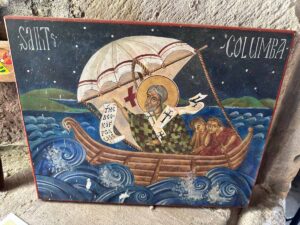
Missionaries from Iona spread the gospel throughout Scotland and northern England. In addition, scholarly monks established Iona as a center of art and learning. The Book of Kells – perhaps the finest piece of manuscript art from early medieval Europe – was likely made on Iona around 800 A.D. There is a replica in the museum at the Abbey.
Slowly, the importance of Iona ebbed. Vikings massacred 68 monks in 806. Fearing more raids, the monks evacuated most of Iona’s treasures to Ireland (including the Book of Kells). Much later, with the Protestant Reformation (which began in 1517), the abbey was abandoned, and most of its finely carved crosses were destroyed.
Our Exploration of Iona
- Cute house in the village
- Iona Map Credit: Rick Steves / Click to enlarge
We used Rick Steves guidebook’s “Iona Walking Tour” to ensure we saw the island’s highlights in our short time there. From the ferry pier, we headed up a small hill on the single paved road past the Nunnery ruins (to visit on the way back).
We made a right turn to walk down a peaceful lane – called North Road – which would take us the short distance to the Abbey. The lane curved through fields and passed by St. Columba Hotel & Larder – one of the places to stay in town. (photos below) It has 27 rooms, its own organic garden, and looks lovely!
- Credit: St. Columba Hotel
Our first stop was St. Oran’s Chapel, located inside the graveyard of the Iona Abbey. The simple chapel is the oldest church building on the island. On one of the walls, a few tall, skinny headstones are displayed. (photo, below right) They were created by local stone carvers in the 14th century, in the distinctive Iona School style.
There is also a simple altar with a metal stand to its left, filled with votive candles that you can light to offer a prayer for a loved one – which Carol & I both did.
Visit to the Iona Abbey
We arrived at the Abbey at 1:45pm – the star attraction! We showed our tickets at the entrance building. We had purchased our tickets ahead on the Historic Environment Scotland website for around £10 (GBP).
Despite repeated Viking raids, we learned that Columba’s monastery survived until the end of the 12th century. Then, around 1200, the sons of Somerled founded a Benedictine abbey here. Visits to St. Columba’s Shrine by pilgrims continued to thrive, even though monastic life on Iona ended with the Protestant Reformation of 1560.
The present abbey, nunnery and graveyard go all the way back to the 13th century. However, much of what you see was rebuilt in the 20th century. As we headed to the church, we passed two faded Celtic crosses (and the base of a third). The originals are in the Abbey museum, which we toured at the end.
First, we visited the original shrine to St. Columba, just to the left of the church entrance. (photo, below left) This small chapel marks the burial place of St. Columba. After the saint’s death in AD 597, a richly decorated wooden chapel was built around his grave. The later stone version dates from around 750 – and it was reconstructed in the 1950s.
While tradition holds that St. Columba’s remains remain under that shrine and within the Abbey, no physical relics are visible today. Many were dispersed or relocated to Ireland and other parts of Scotland. However, St. Columba’s Shrine remains a popular place of pilgrimage.
Visit to the Abbey Church & Cloister
We headed inside “The Great Church” (An Eaglais Mhor, in Gaelic). Built on the site of Columba’s church, it was begun in the 1200s with the arrival of the Benedictines. The church was restored in the early 1900s by the Iona Cathedral Trust.
Thankfully, a new religious community – the Iona Community – has given the abbey fresh life. Formed in 1938, the Iona Community is an ecumenical gathering of men and women who seek new ways of living the Gospel in today’s world. They place a focus on worship, peace and justice issues, and reconciliation. Personally, as a “more spiritual, than religious” person, this sounds great to me!
Because of the Iona Community, it’s once again an active church – as evidenced by hymnals resting on the chairs. The wooden ceiling sits high above the stone floor, with arched windows all around. The main altar, possibly carved from locally quarried Iona marble, is a key feature of the church.
I liked this quote from AI: The interior of Iona Abbey Church is a blend of historical preservation and modern adaptation, offering a rich experience for those interested in the history of Christianity, Celtic culture, and the beauty of ancient architecture.
The Abbey Cloister
Exiting the church through a side door in the nave, we found ourselves in the Cloister – a beautiful courtyard surrounded by an arched walkway with finely carved capitals atop the columns. Most are modern reproductions, but a few are medieval originals, once painted in brilliant colors.
In the past, monastic life revolved around the cloister, which was the heart of the abbey complex. The cloister linked the church with the rest of the buildings – and its covered walkways provided a quiet place for contemplation.
In modern times, Iona’s tranquil Cloister is still a lovely place where you can sit for a while in stillness. The interior grassy courtyard contains a modern bronze sculpture by Jacob Lipchitz. It’s named “Descent of the Spirit” as an expression of hope for better human understanding.
The Abbey Museum
Be sure not to miss the excellent museum, which could be easily done. That’s because it’s located at the far side of the abbey complex, facing towards the sea. Luckily, there are signs. The Abbey Museum is built on the site of the medieval infirmary, which is where monks cared for their sick & dying.
The museum houses Scotland’s finest collection of early medieval carved stones and crosses. Rick Steves states: The modern, well-presented “Iona: Across Time” exhibit displays a remarkable collection of original stonework from the abbey, all eloquently described.
The Book of Kells
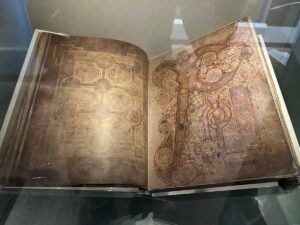
The book is renowned for its intricate and vibrant illustrations, including full-page depictions of Christ, the Virgin Mary, and the Evangelists, as well as elaborate Celtic motifs and intricate lettering.
As mentioned, the Book of Kells was likely created here in Iona around 800 AD by the Celtic monks. However, because of the Viking raids, most of Iona’s treasures were soon moved – including the Book which was sent to Ireland.
The Book of Kells is currently housed in Dublin in the Old Library at Trinity College. (photo, to right) It is considered one of Ireland’s greatest cultural treasures. In fact, I saw the Book of Kells when I visited Ireland in 2003. So, I was particularly excited to visit Iona Abbey – to see where the famed Book was created some 12 centuries earlier!
If you’d like to know a little more about the Book of Kells, below is the wording from the “description plaque” in the museum:
“The Work of Angels”
In a drafty timber hut on this ancient holy isle, the monks produced some of the finest illuminated manuscripts in Europe. Around 800, they created their greatest ever masterpiece – the Book of Kells.
Four scribes worked for years to create this splendid copy of the four gospels. Using sophisticated techniques to extract pigments from plants and minerals, they infused its pages with a remarkable range of colors. Overflowing with imagery, the manuscript is full of biblical figures, Christian symbols and plant and animal motifs, amidst intricate interlace designs.
Reserved for occasional use, this deluxe gospel book only graced the altar on special feast days. Its magnificent decoration must have appeared truly miraculous.
Saying Goodbye to the Abbey
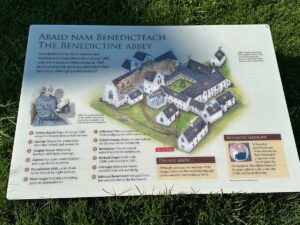
Unfortunately, we didn’t have time to stop at the Iona Community’s Welcome Centre, just beyond and across the road from the Abbey. The Iona Community runs the abbey with Historic Scotland. They also host modern-day pilgrims who come to Iona. I would have enjoyed speaking with community members to learn more about what they do & their life on Iona.
Return to Baile Mòr – the Nunnery Ruins
We walked back along the same peaceful lane to Baile Mòr. We made a short stop to visit the ruins of The Nunnery – one of Britain’s best-preserved medieval nunneries.
Founded around 1200, the convent flourished for more than 350 years. It’s picturesque & worth a quick walk through. Be sure to check out the “World of Women” sign showing an artist’s impression of what the nunnery would have looked like in the 1500s. It also helps orient you to the different areas of the ruins.
Ferry Back to Fionnphort & the Return Trip to Oban
Arriving at Baile Mòr’s harbor & pier, we stood in line for the 3:00pm ferry – which we could not miss! While waiting, we enjoyed more beautiful views of this incredibly picturesque harbor & St. Ronan’s Bay in the bright sunshine. I was surprised by the clear turquoise blue waters in the shallow cove there!
- Boarding ferry in Iona
- Arriving Fionnphort in Mull
The Iona ferry took us back to Fionnphort, where our bus & driver Barry were waiting for us. We departed at 3:20pm for the long drive across Mull. Like many of my fellow bus passengers, I slept much of the way. We arrived in Craignure at 4:50pm, just in time to board the same ferry, the MV Isle of Mull.
- The MV Isle of Mull in Craignure
- Pretty view of Craignure shoreline as we departed
We departed at 5:05pm. This time, Carol, Eddie & I sat inside in the comfortable Observation lounge for most of the trip. As we got closer to the Oban, we headed outside to the upper deck for more views of the town’s pretty coastline. We saw an old castle ruin perched on a hilltop. (below)
We arrived in Oban at 6:00pm, as scheduled. We were pleased that our day-trip excursion to the islands of Mull & Iona had been an enjoyable success – along with great weather!
Dinner / Final Evening in Oban
After disembarking the ferry, we headed back to our hotel. Starting to think about dinner, we stopped at the restaurant next door to The Ranald to see if we could make reservations. It was 6:30pm. Turns out, no later reservations were available, but they could squeeze us in right then – as long as we were done by 8pm. Of course, no problem!
So, we enjoyed another great dinner in Oban. This time at The Lorne – Whiskey Pub & Kitchen (est. 1898). Eddie again ordered mussels and Carol had sea bass over risotto. I ordered scallops over risotto (black pudding & pancetta). They were huge & delish. (as the photos show!).
After dinner, we took a fun hour-long walk along Oban’s waterfront and the town’s main streets. Oban is also pretty at night with all its lights. We were certainly going to miss this charming town, but we had set-in-stone plans to visit more of Scotland’s wonderful sights! We were heading off the next morning to tour the Glencoe Valley and the Isle of Skye.
FINAL THOUGHTS & RESOURCES
I highly recommend “doing Oban” just as we did – staying 2 nights in Oban to explore the town and take the full-day excursion out to the island of Mull & Iona. If it turns out to be during the summer’s puffin season, I would consider adding Staffa for the “3 Isles Tour.”
I really loved the island of Iona and could have spent more time there. But the regular day-trip excursion gives you only around two hours in Iona. If you’re someone who’s more spiritually inclined or into “slower travel,” you might consider an overnight stay on Iona. That way, you could take your time to explore the island, meet the local people, and have more time at the Abbey.
Info About Booking “West Coast Tours” Excursions to the Islands
The West Coast Tours trips run every day, all summer long (with no tours November-Easter). Because tours can sell out, it is recommended that you book in advance. In July & August, that means several days ahead. It’s even good to do at other less busy times – ideally, once you have a sense of weather forecasts. West Coast Tours Website
A large colony of Atlantic puffins settles on the small remote & uninhabited island of Staffa each spring and summer during mating season. They arrive during March & April. One source stated that they should be there by early May. The nesting puffins depart sometime in early August.
Rick Steves guidebook says: Though this trip is spectacular when it’s sunny, it’s worthwhile in any weather (though there’s not much to do on Iona if it’s pouring). If rain or rough seas are expected, he recommends skipping Staffa.
- The 8-hour Mull & Iona tour includes all your ferry & bus transportation. I paid £45 in September 2024. However, the current price on the website (as of July 2025) is £56 (currently around $76 USD).
- The 10-hour “Three Isles Tour” of Mull, Iona & Staffa. The current price listed on the website (as of July 2025) is £97.
RESOURCES:
- Rick Steves Guidebook “Best of Scotland” – Click here for the Amazon link
- West Coast Tours General Website
- West Coast Tours “The Island Tours” Webpage
- Iona’s official website has good info – Click here
- The Iona Community
- St. Columba Hotel (on Iona)
- Historic Environment Scotland website (to order Iona Abbey tickets)
- Good Article About Iona Abbey (by Britain Express) – click here
Comments: Have you visited Oban or Iona & Mull? What did you think? Any recommendations you’d like to share?
- Scotland Map Credit: Rick Steves
- Iona Map Credit: Rick Steves

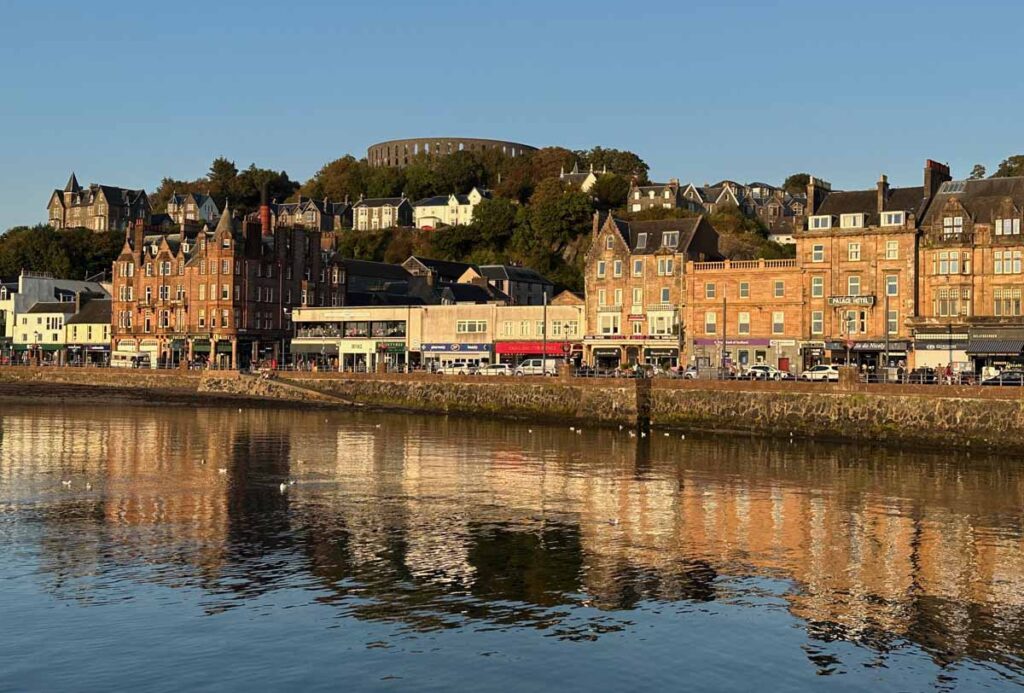
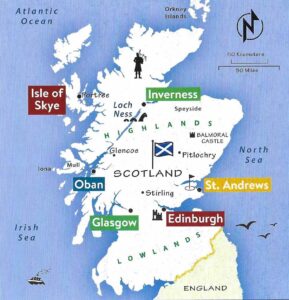
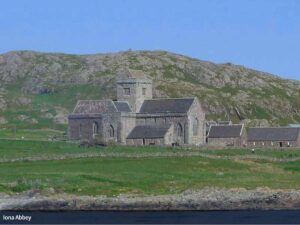
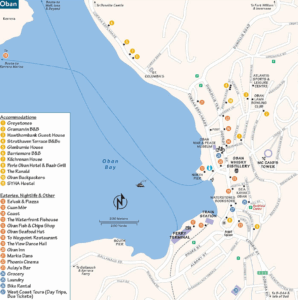
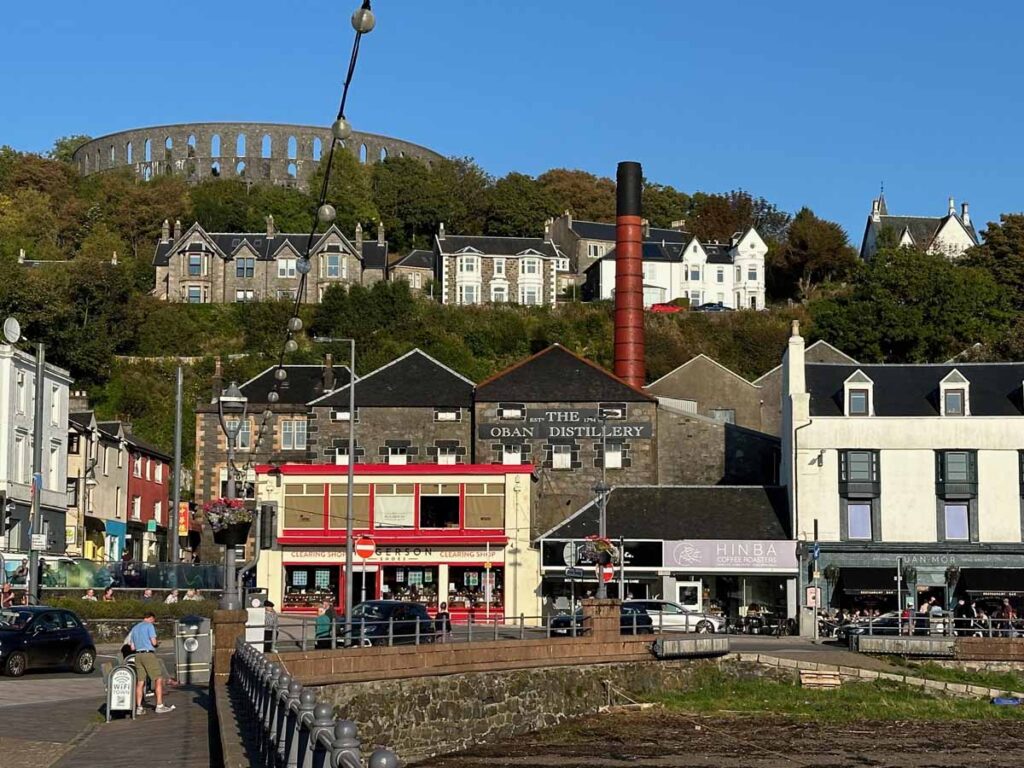
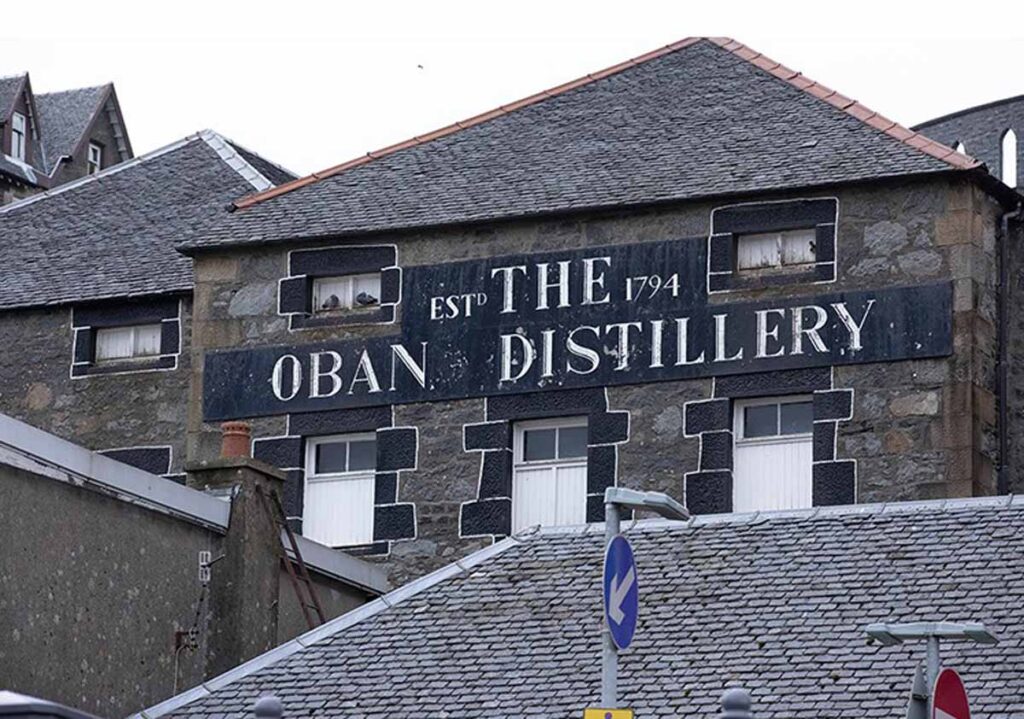
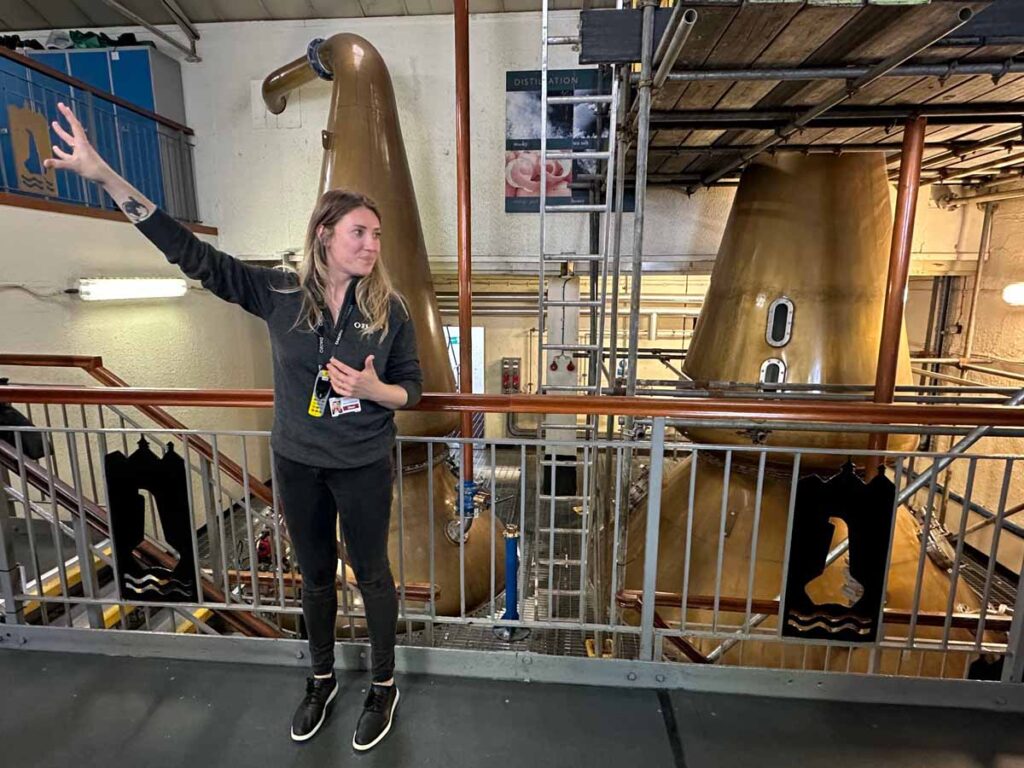

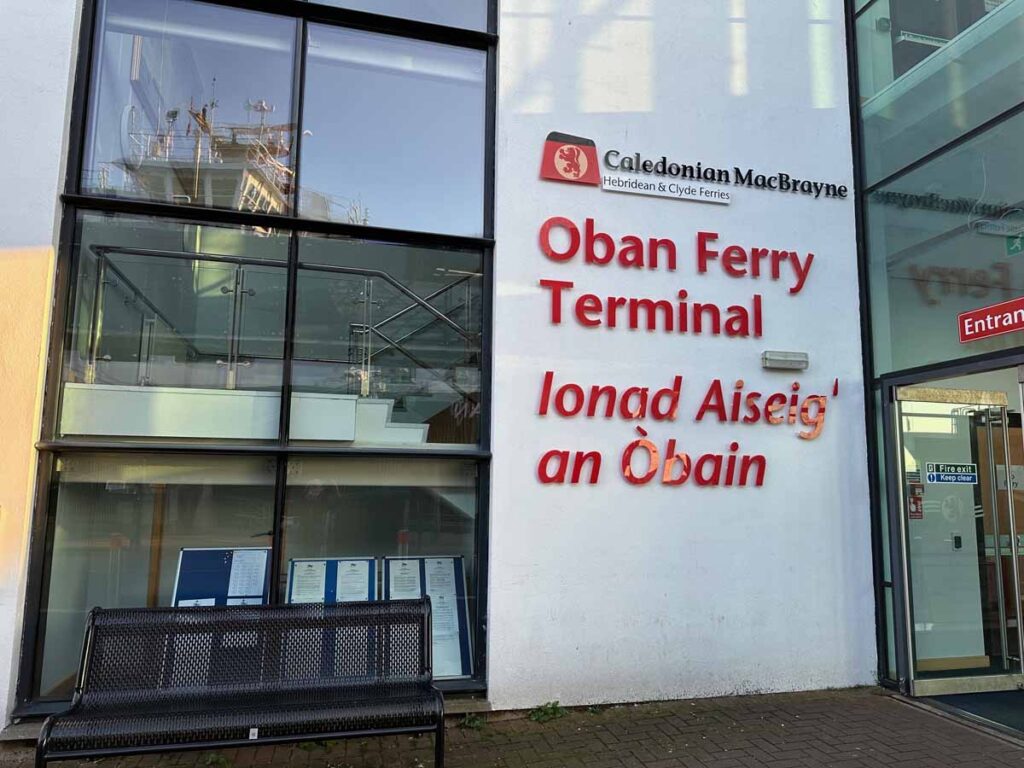
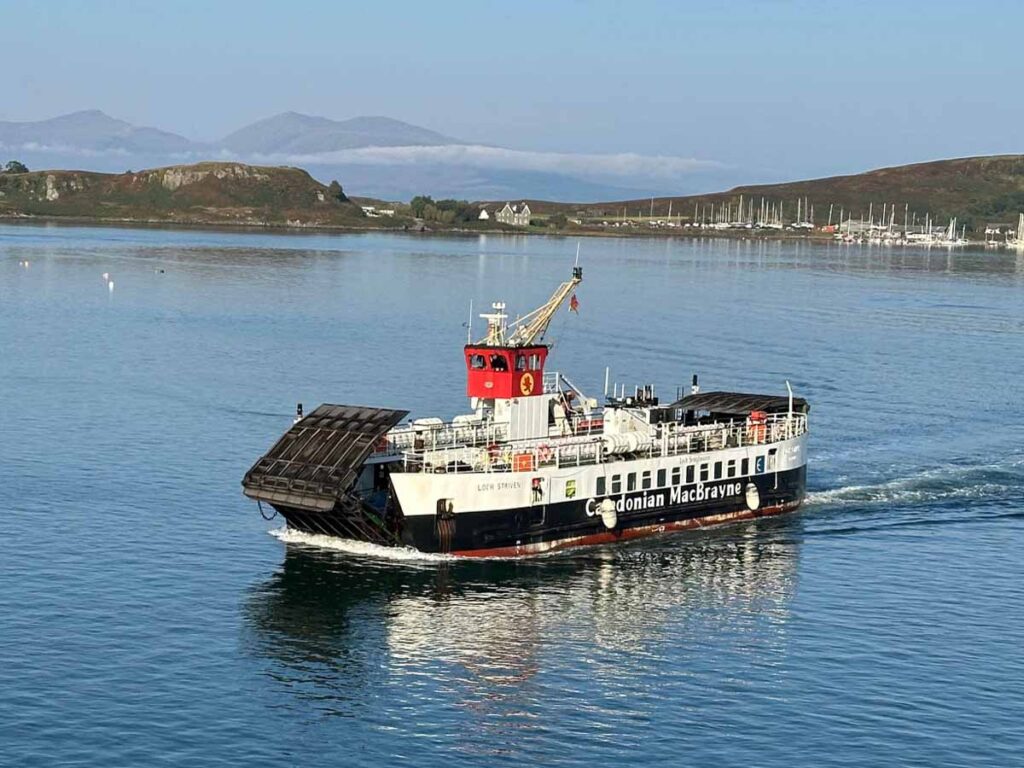


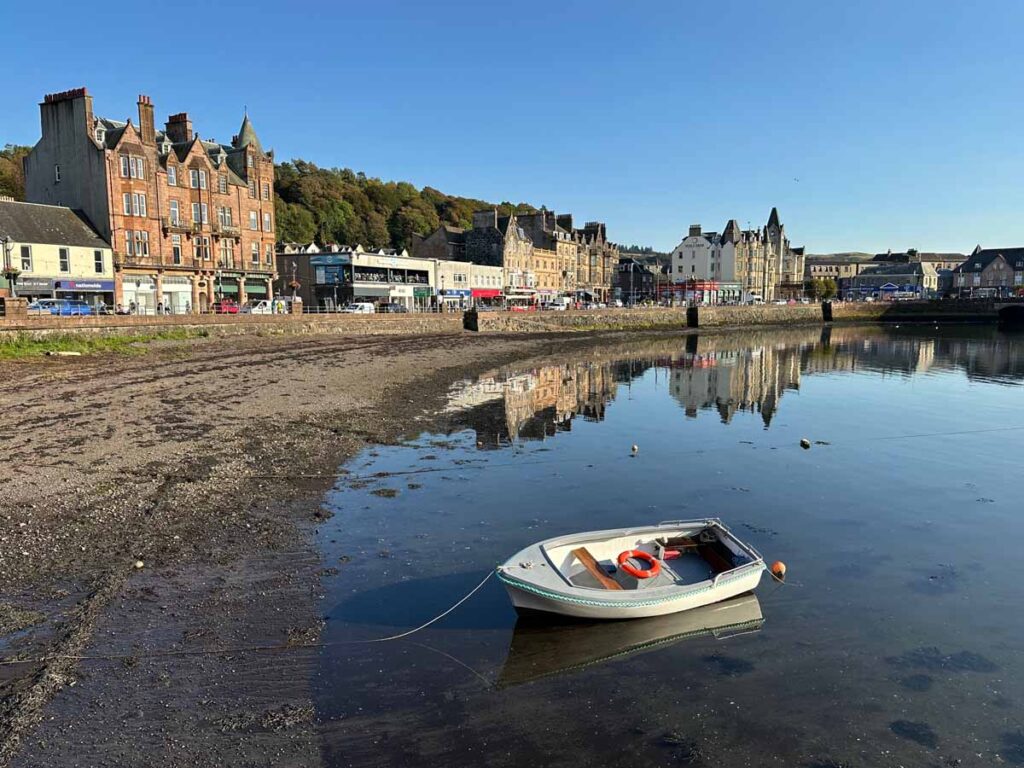
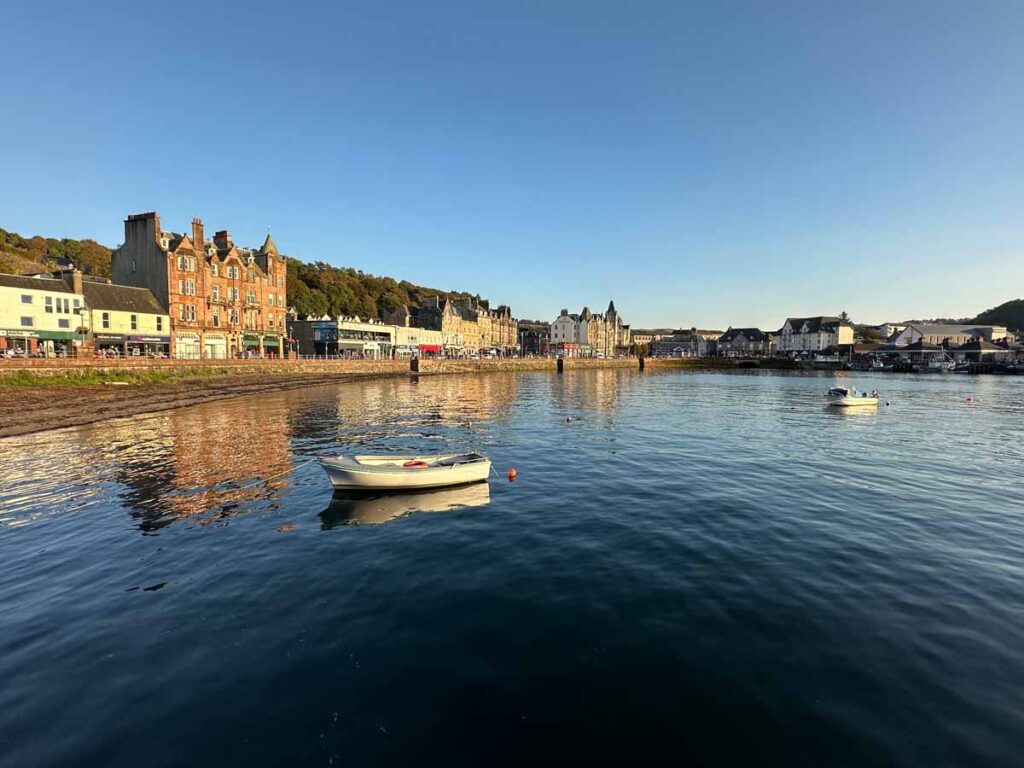
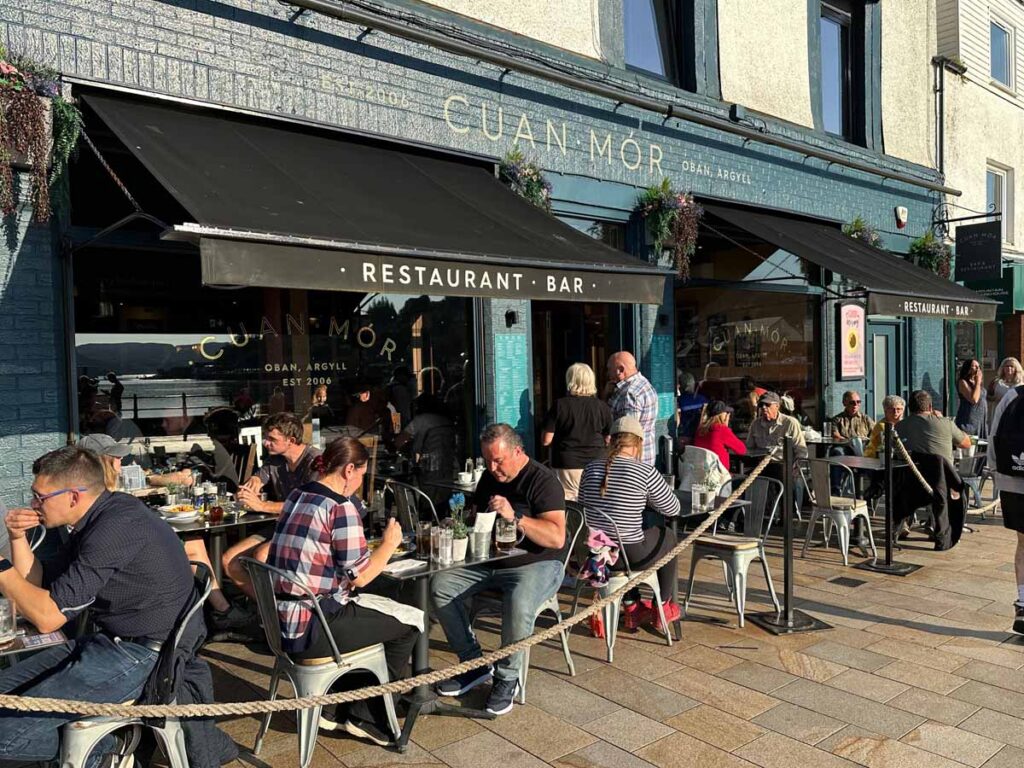
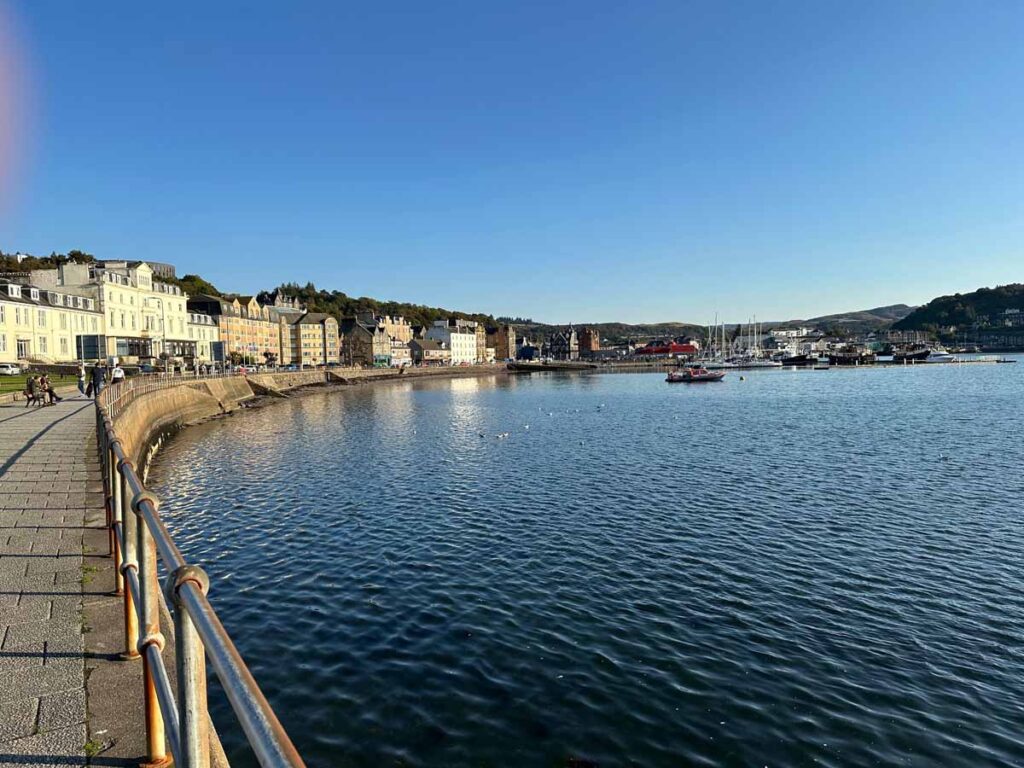


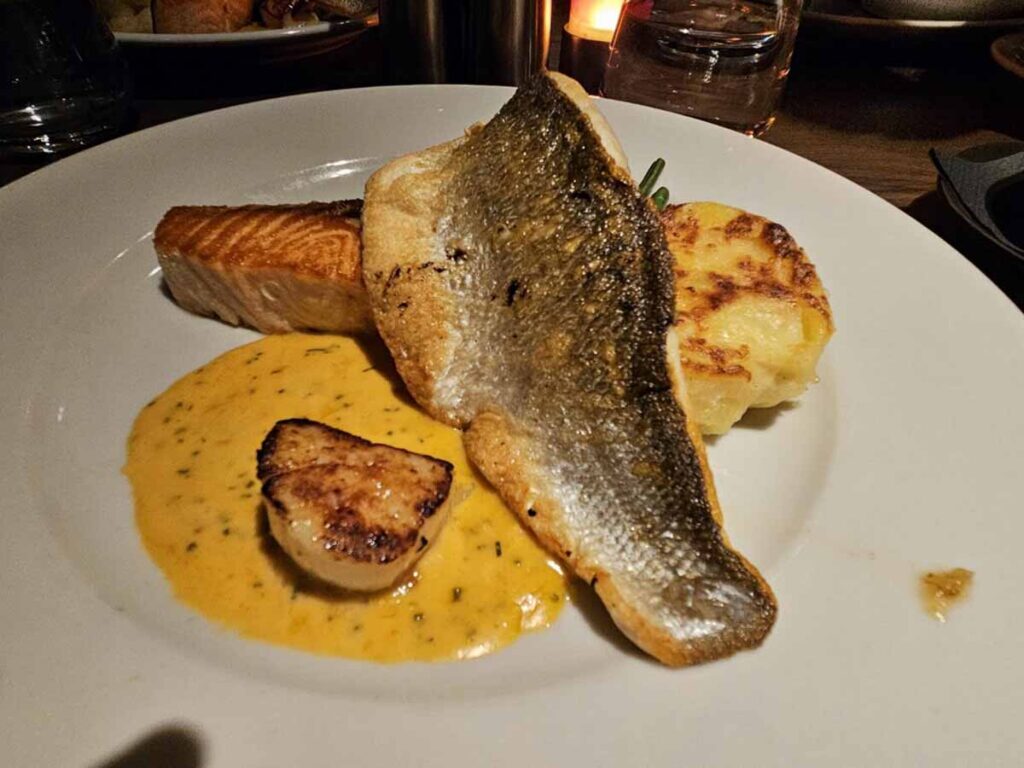


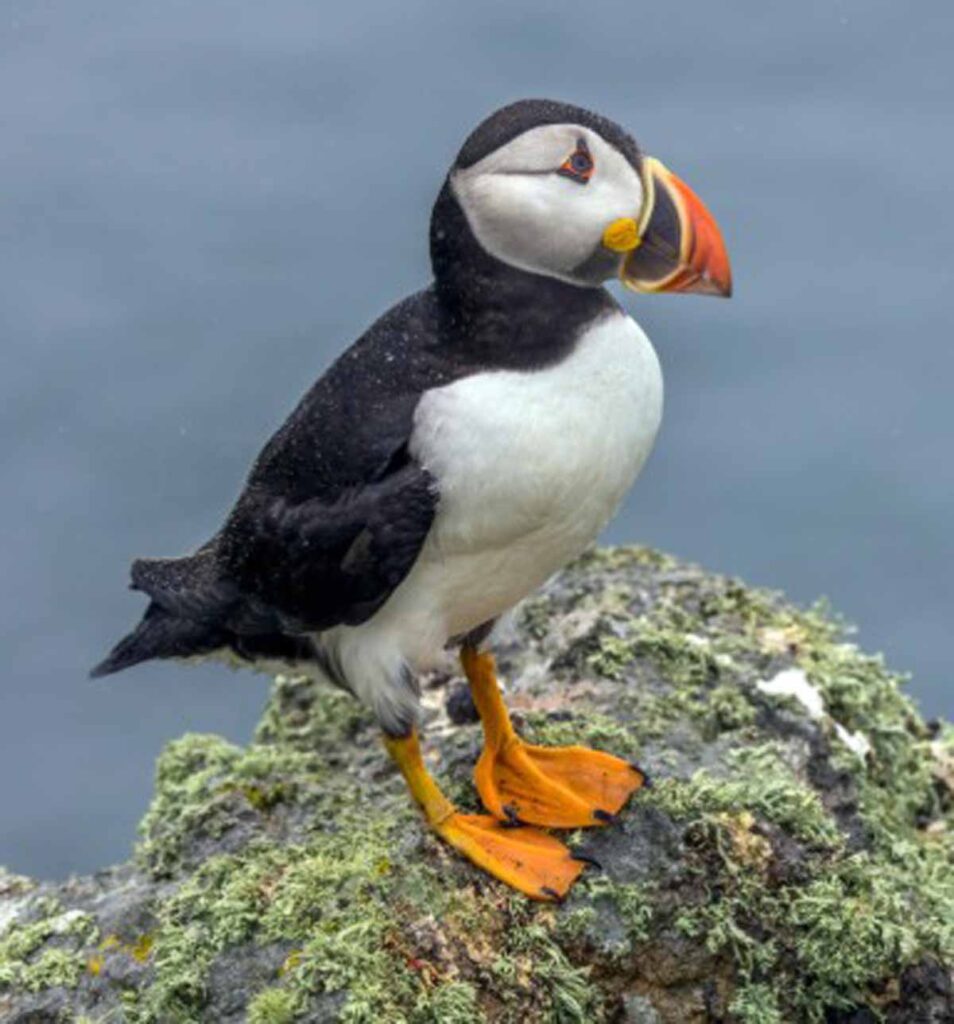
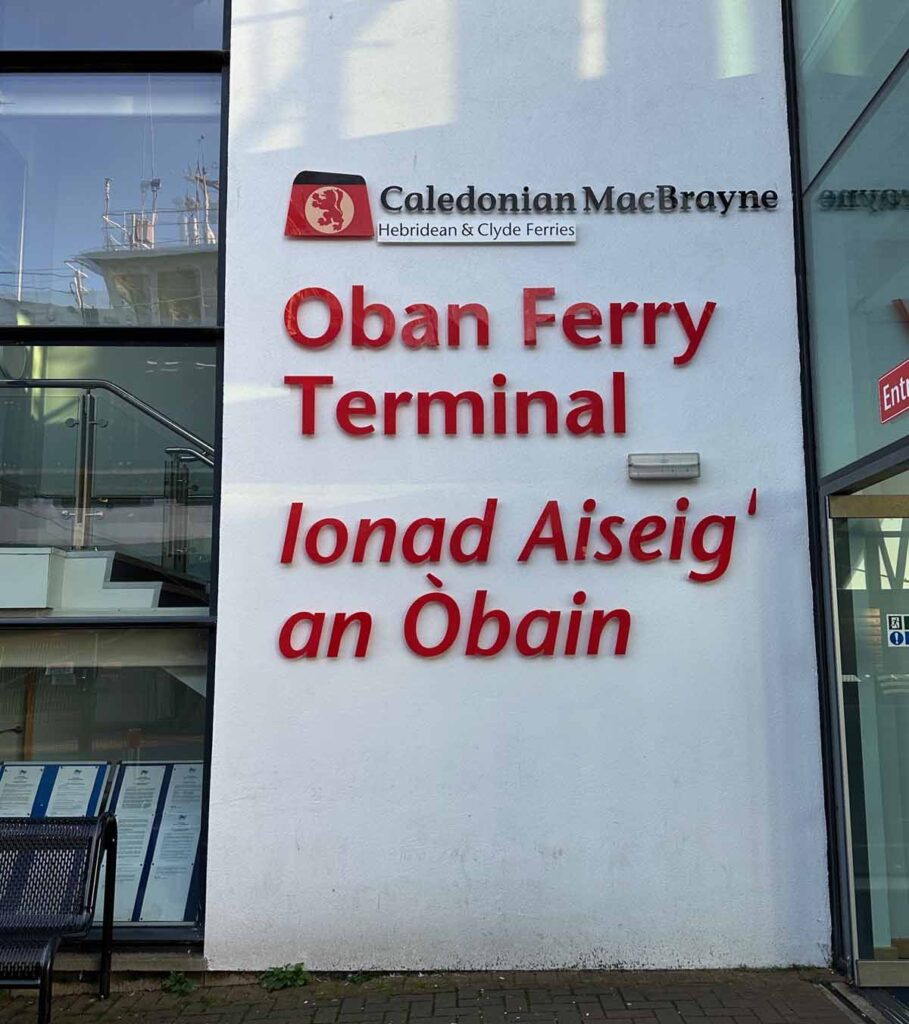
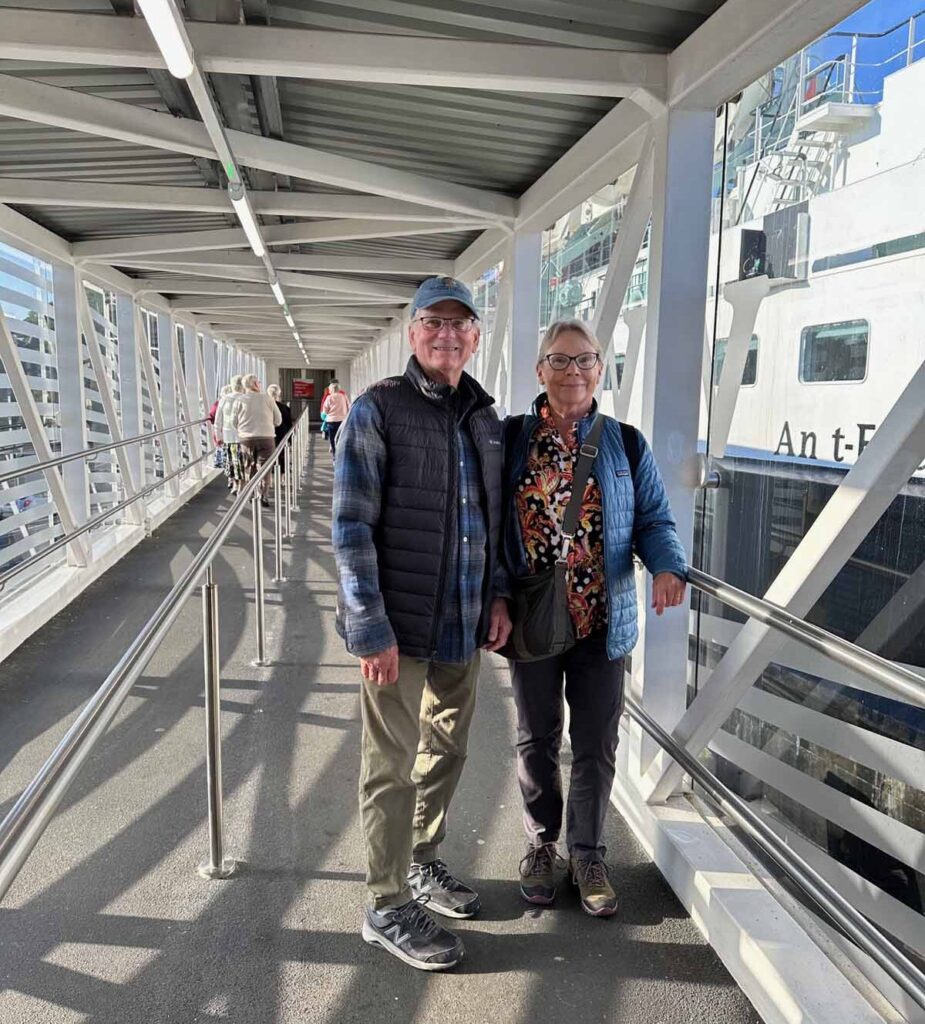
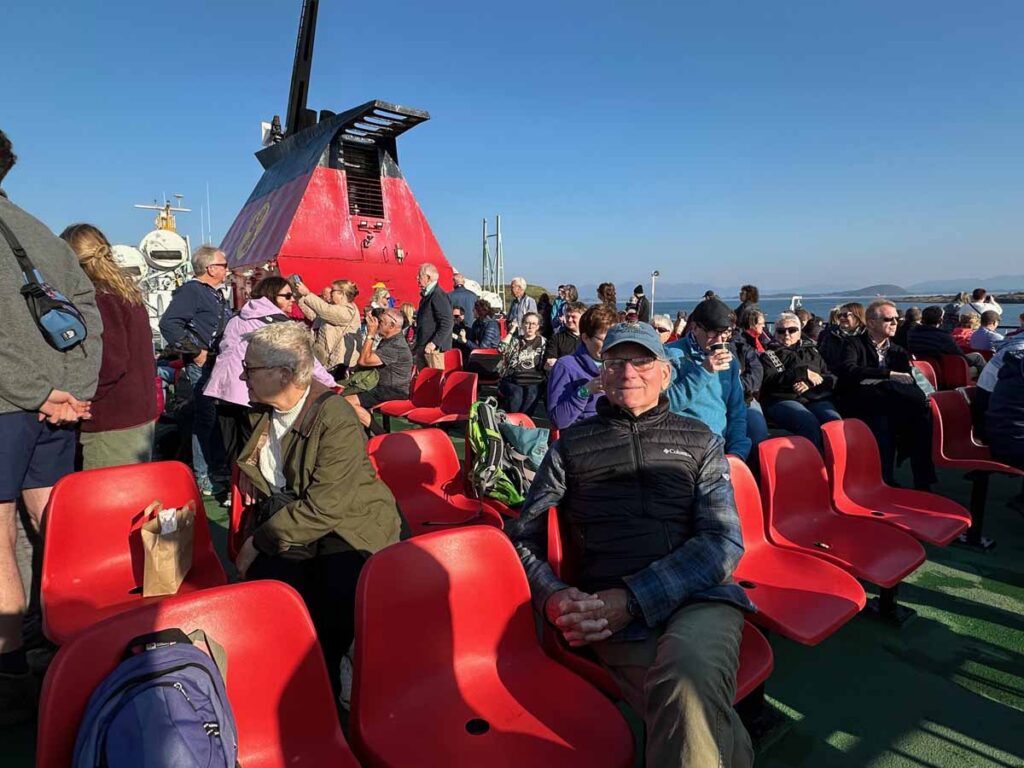
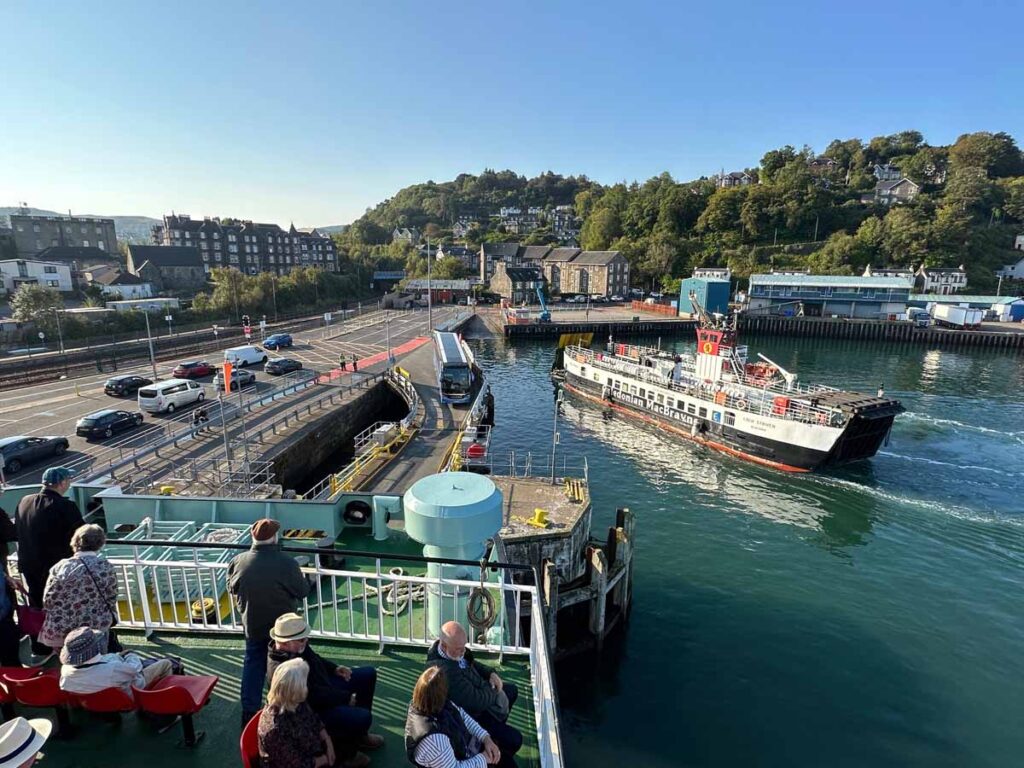
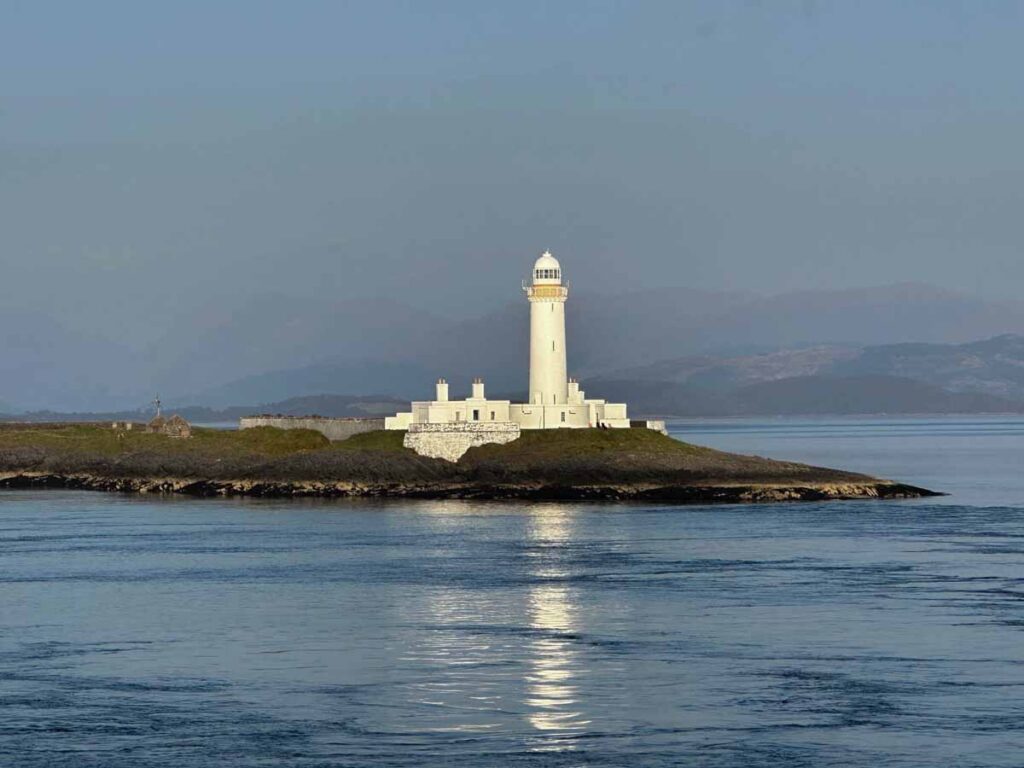
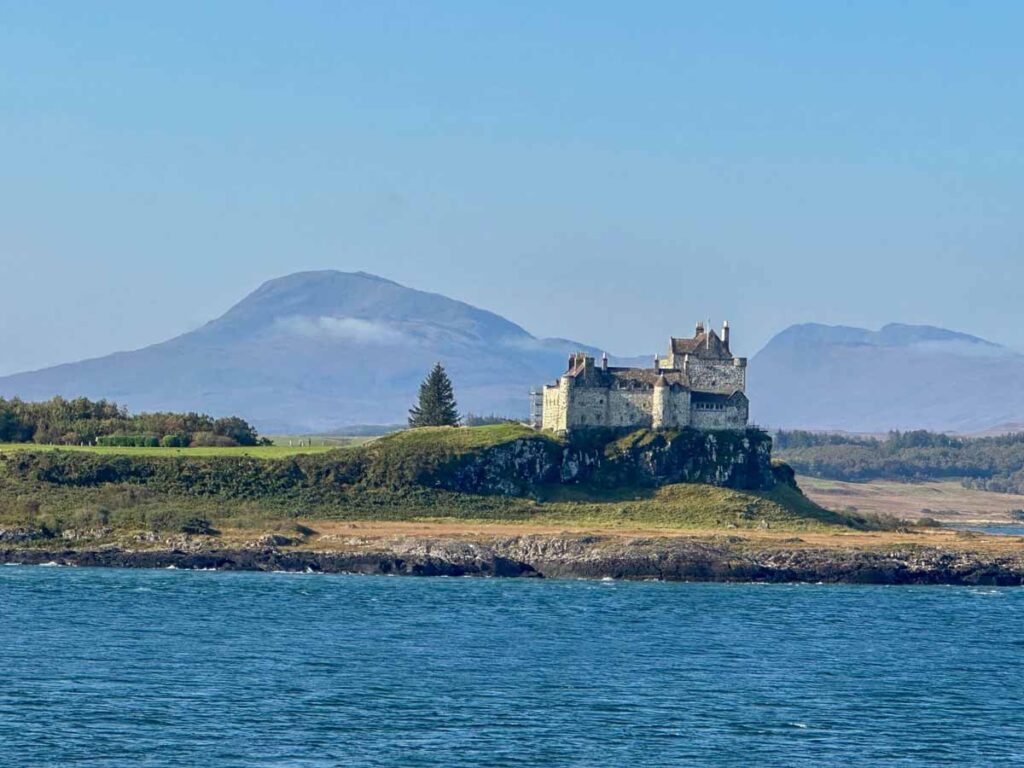
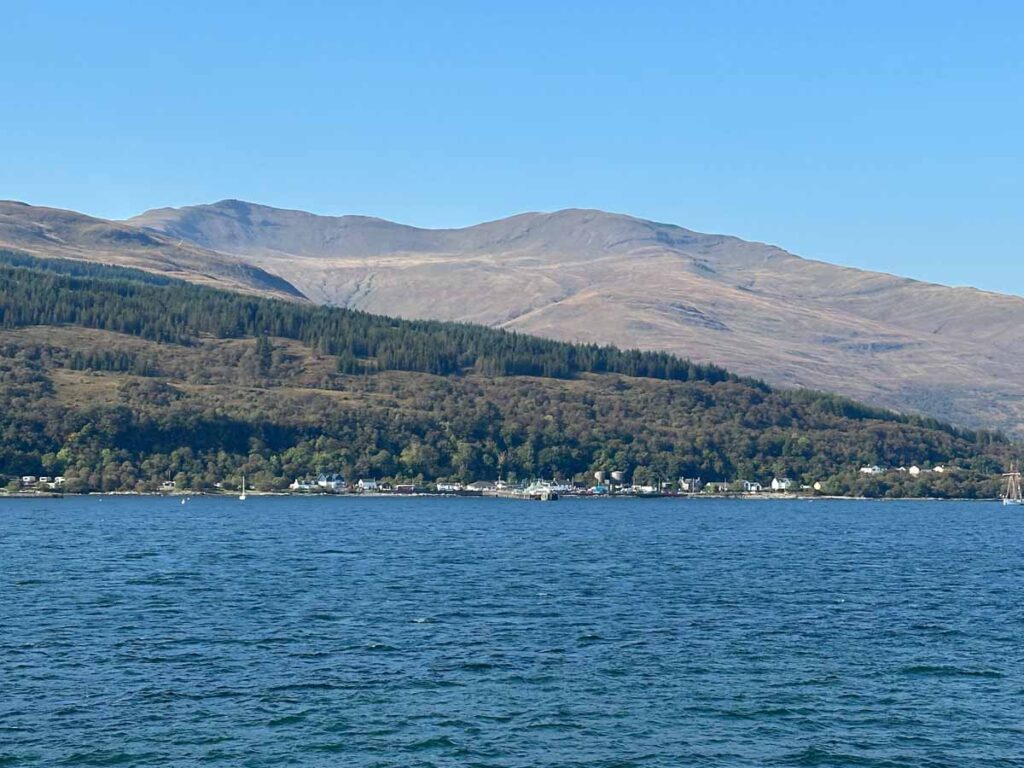

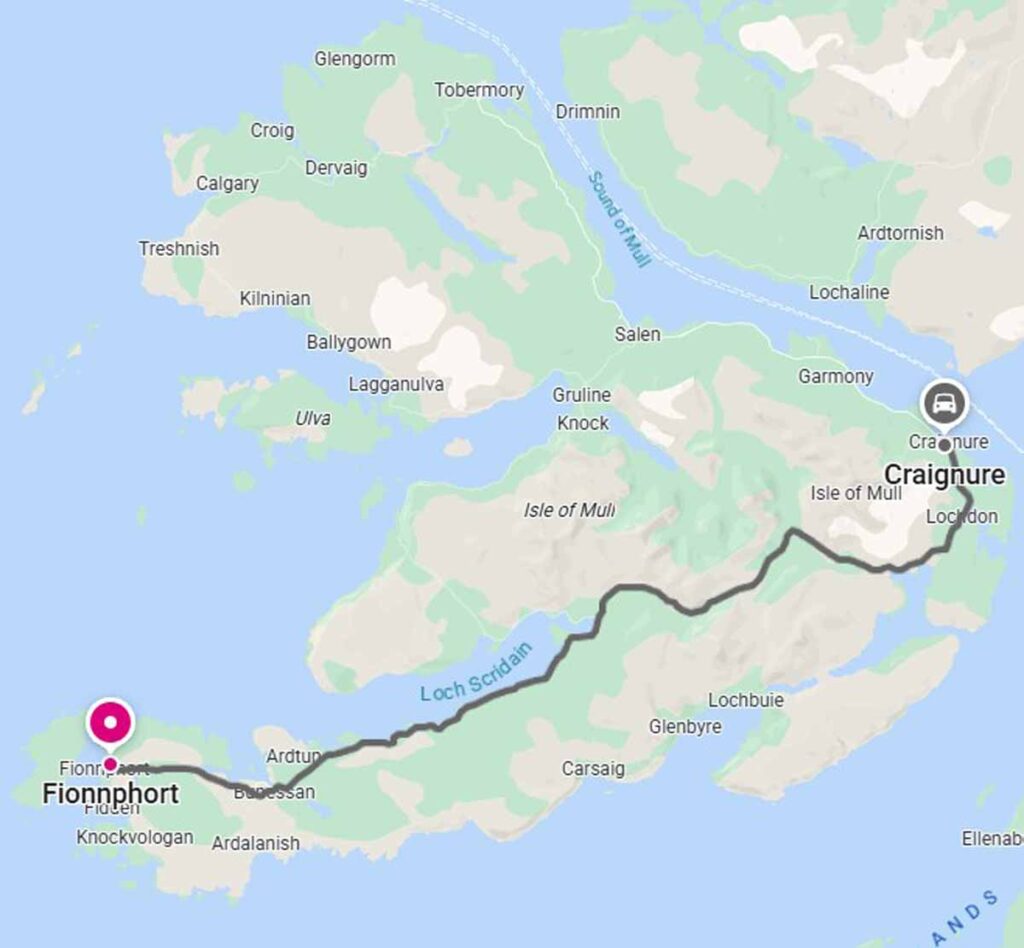

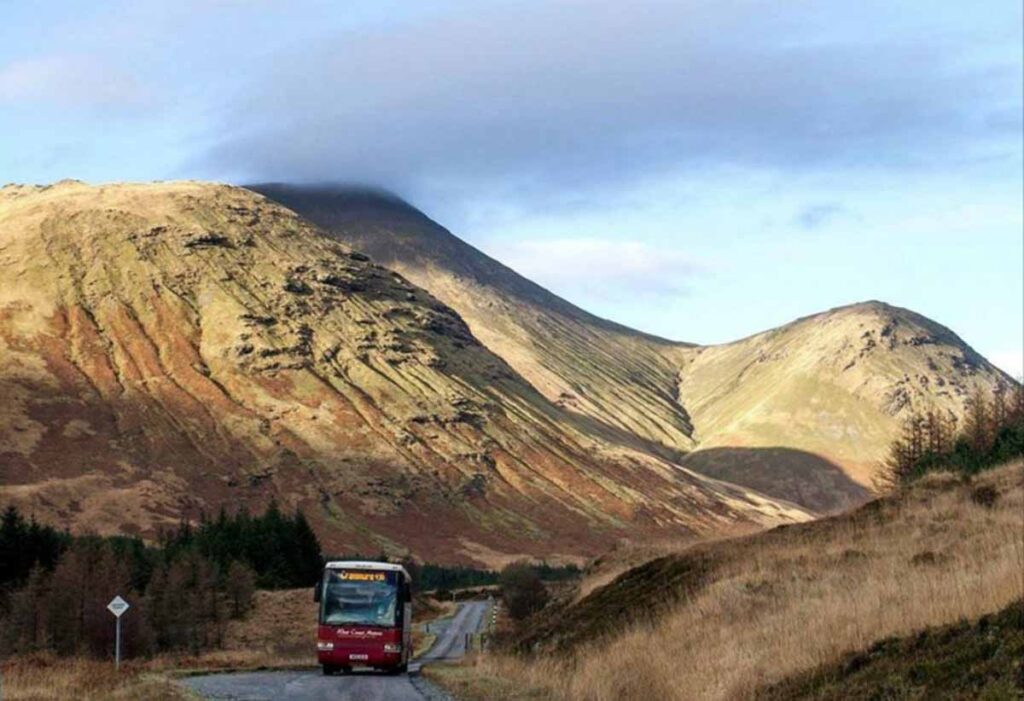
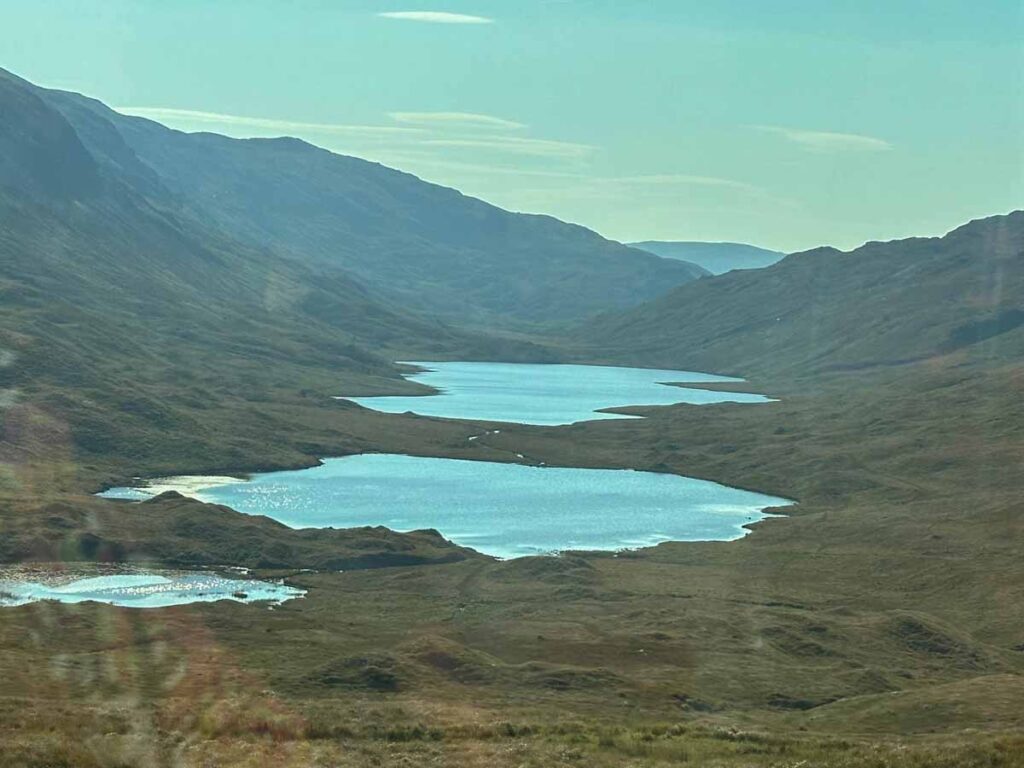

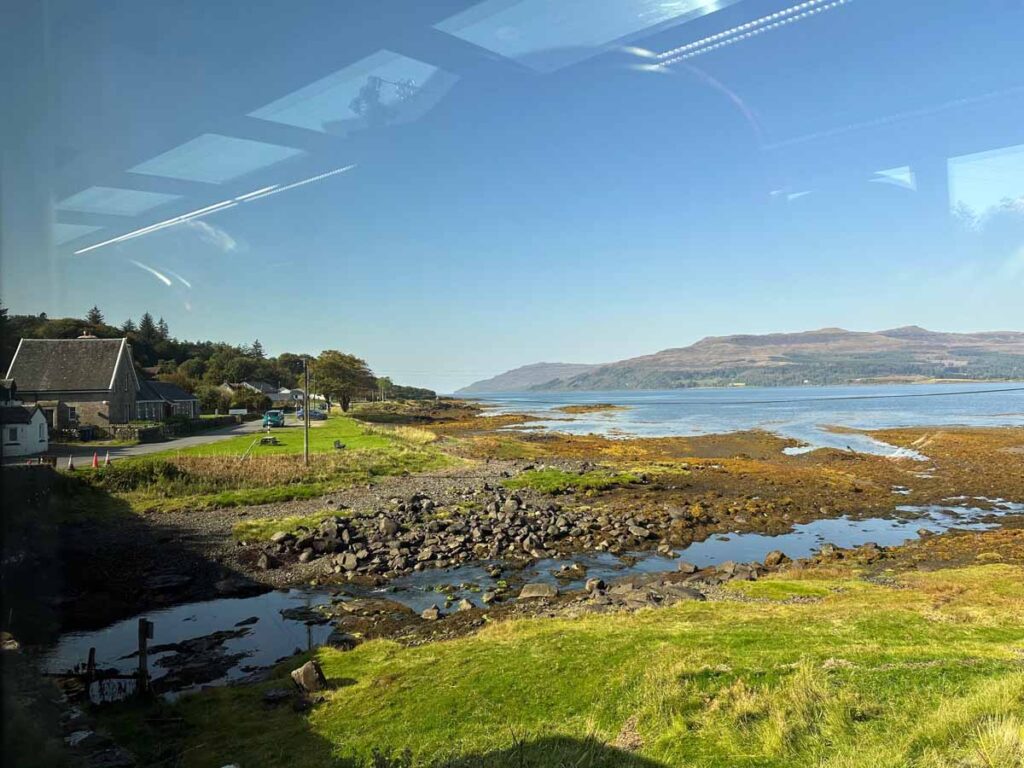
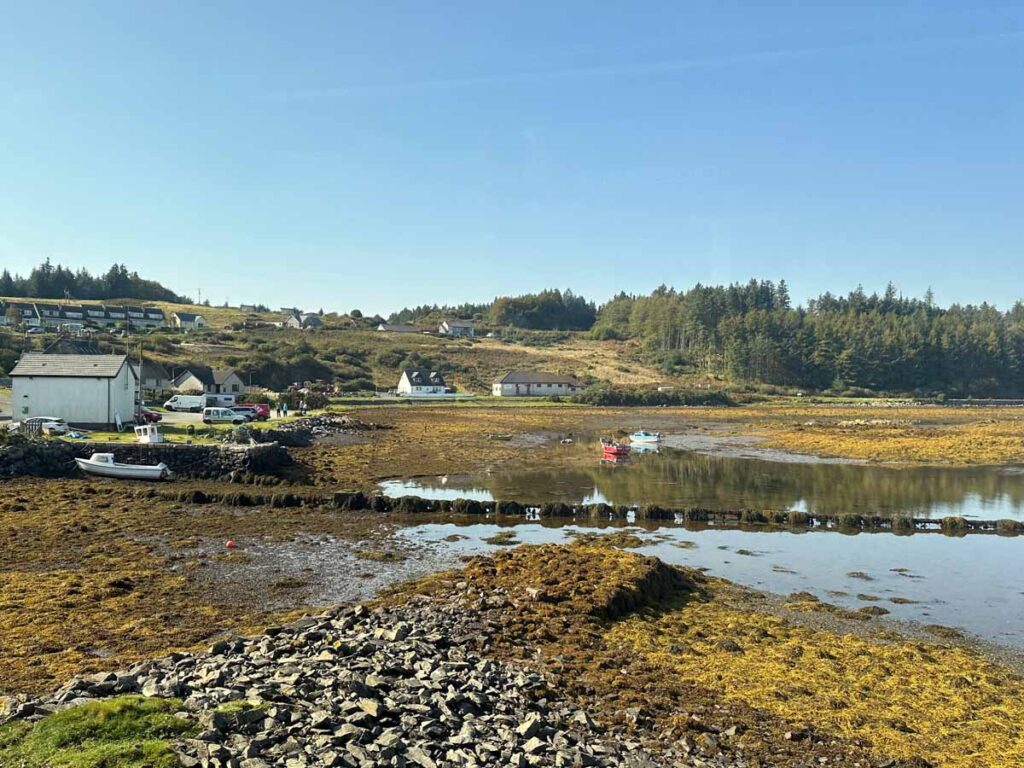

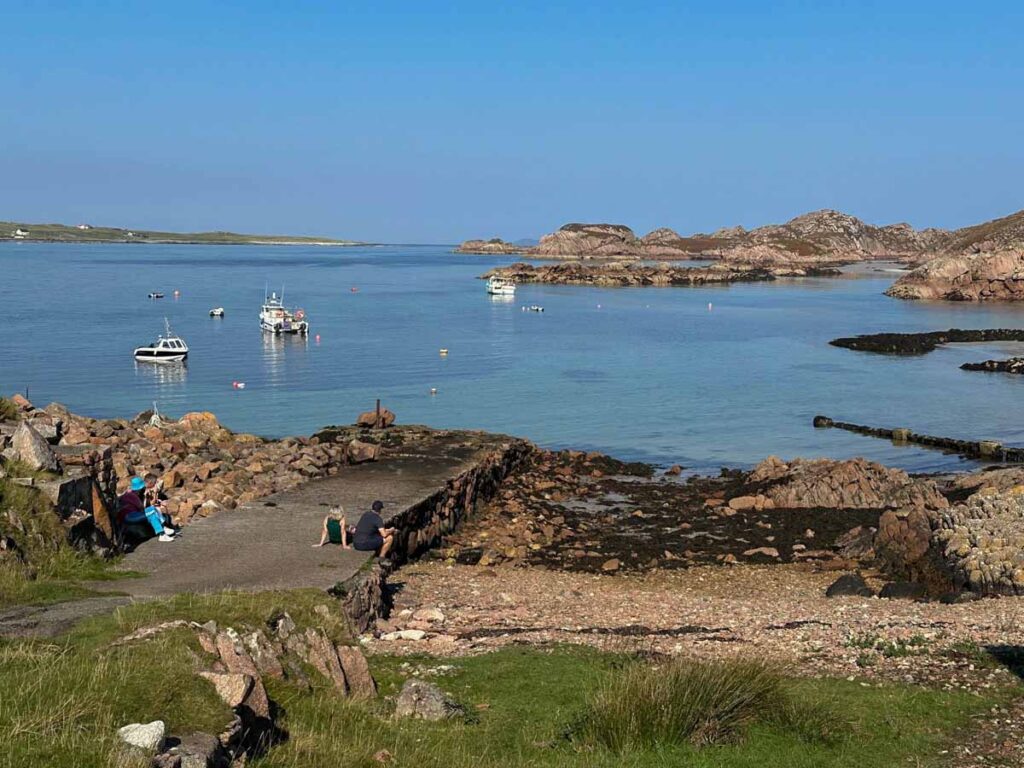




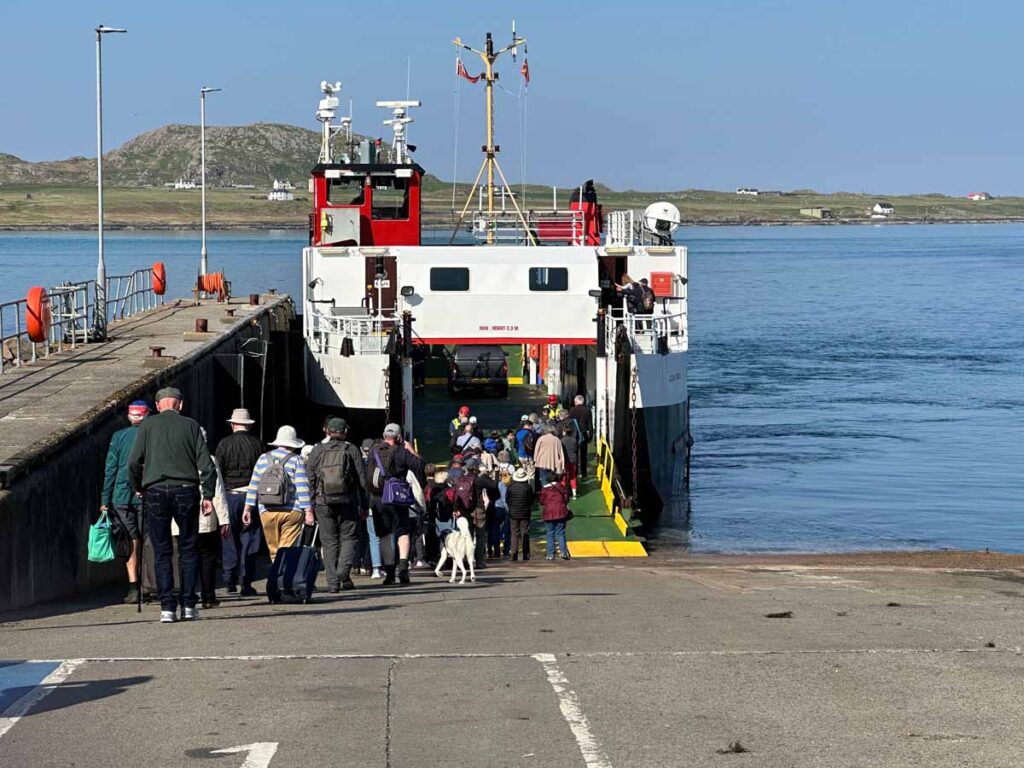
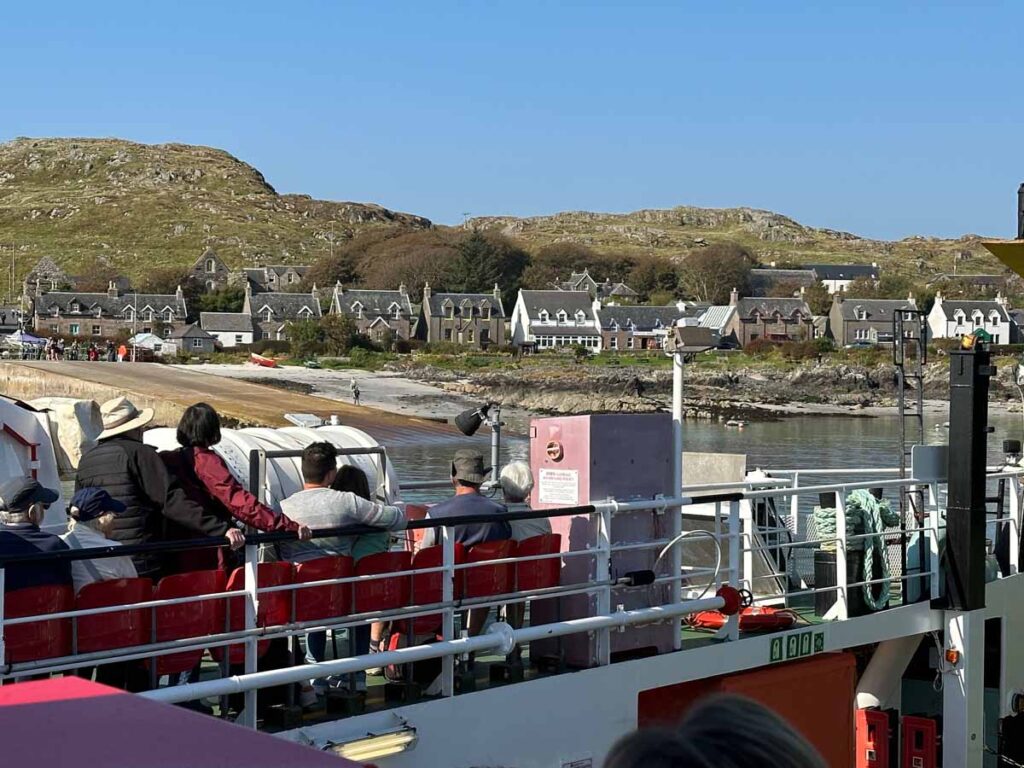
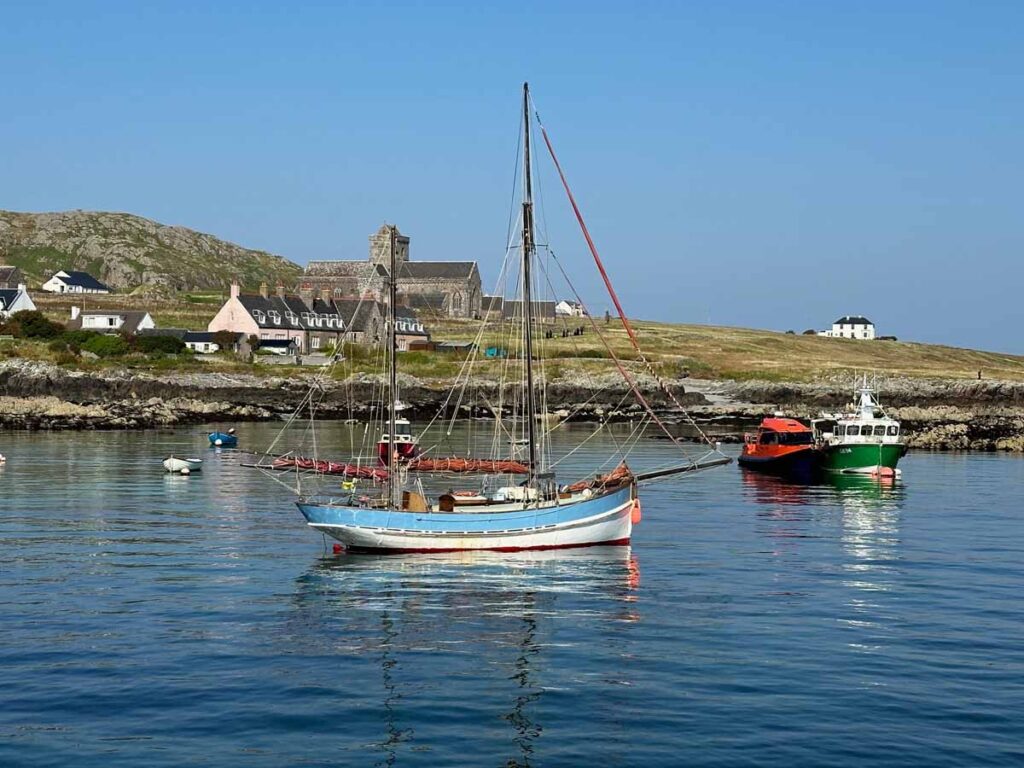
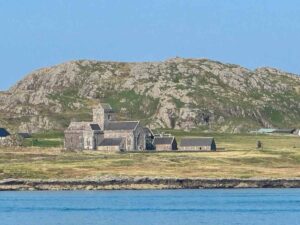
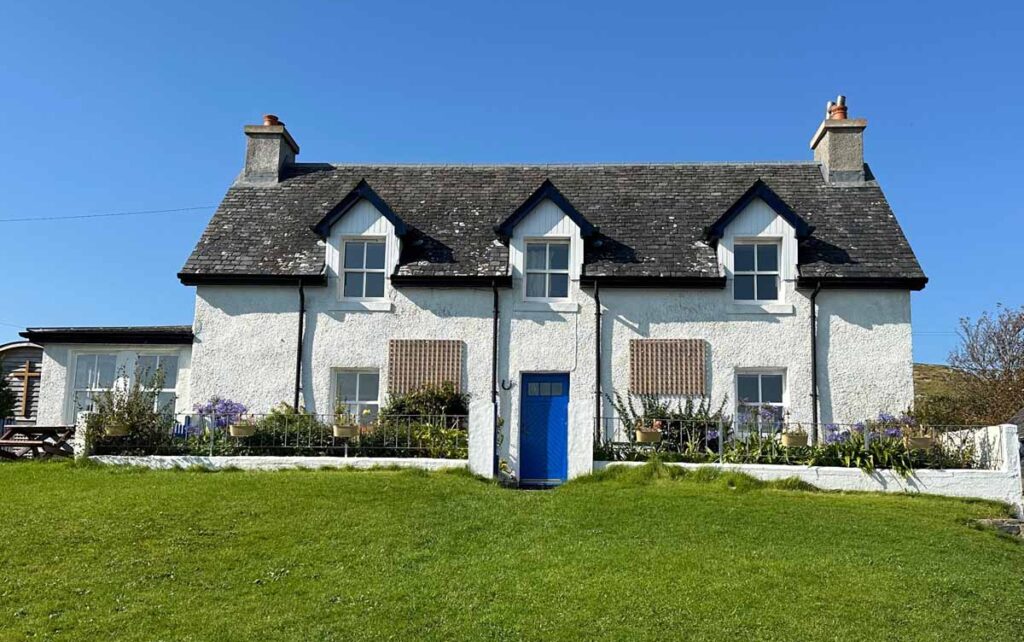
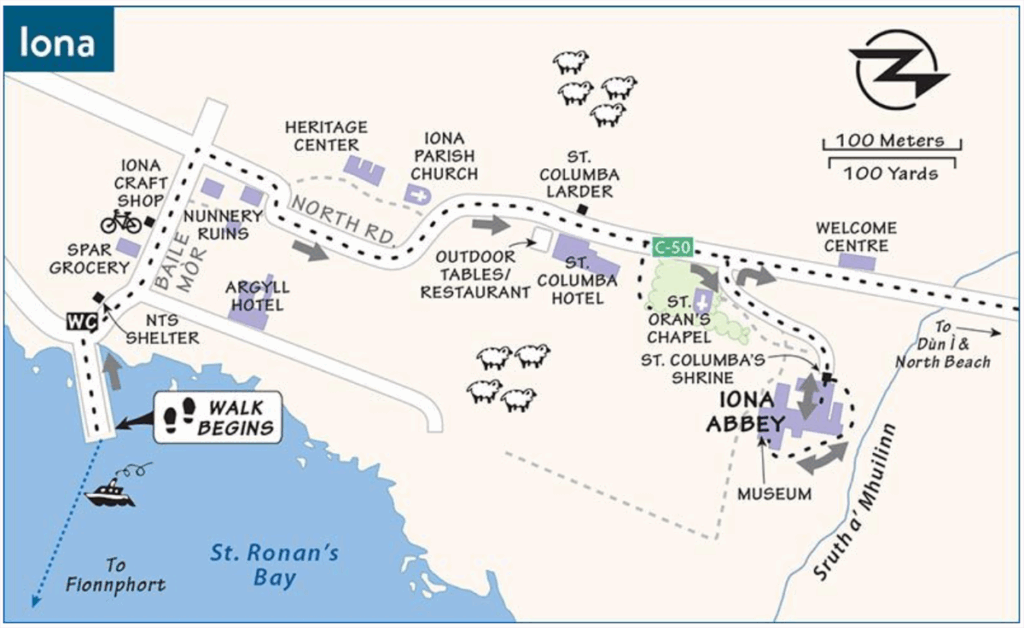
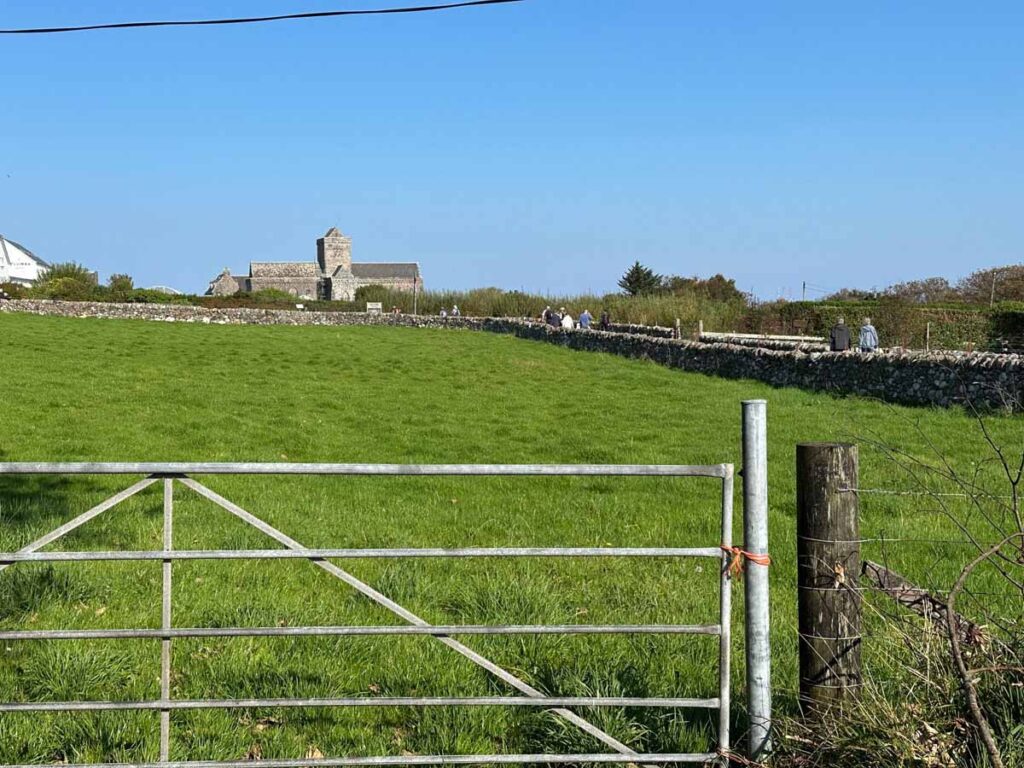

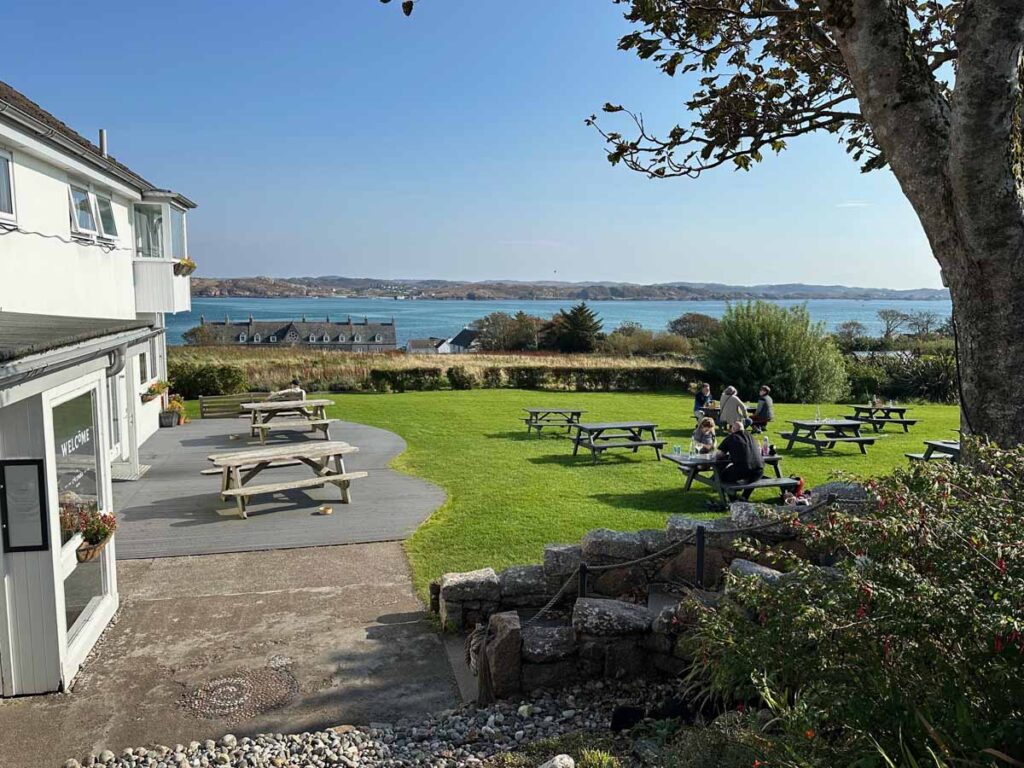
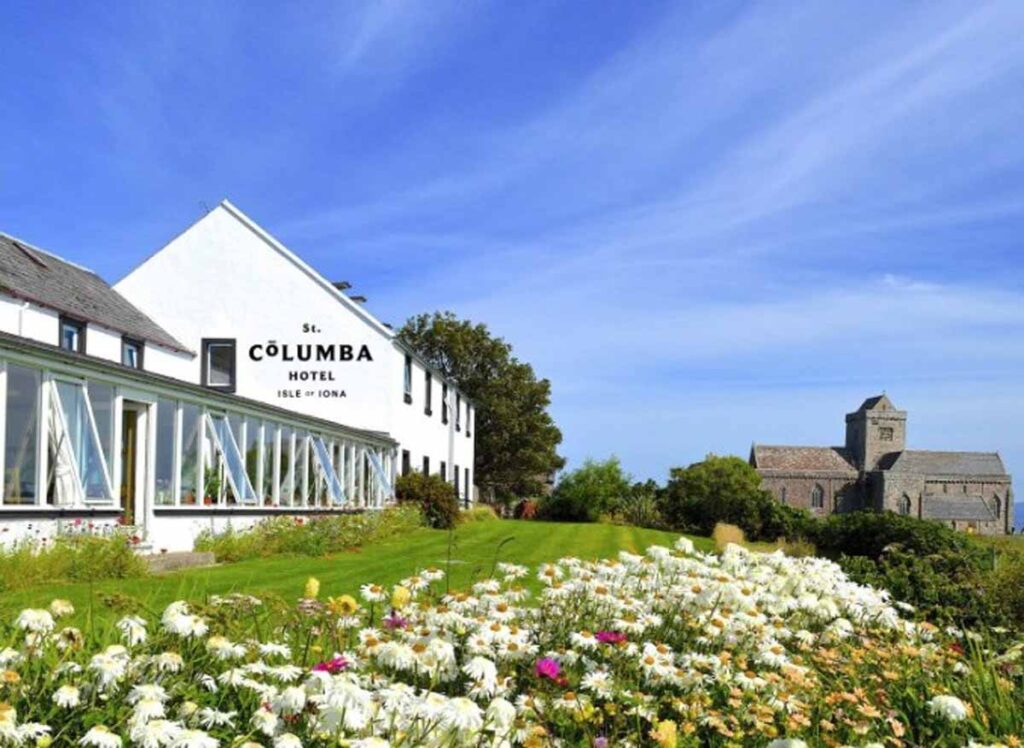
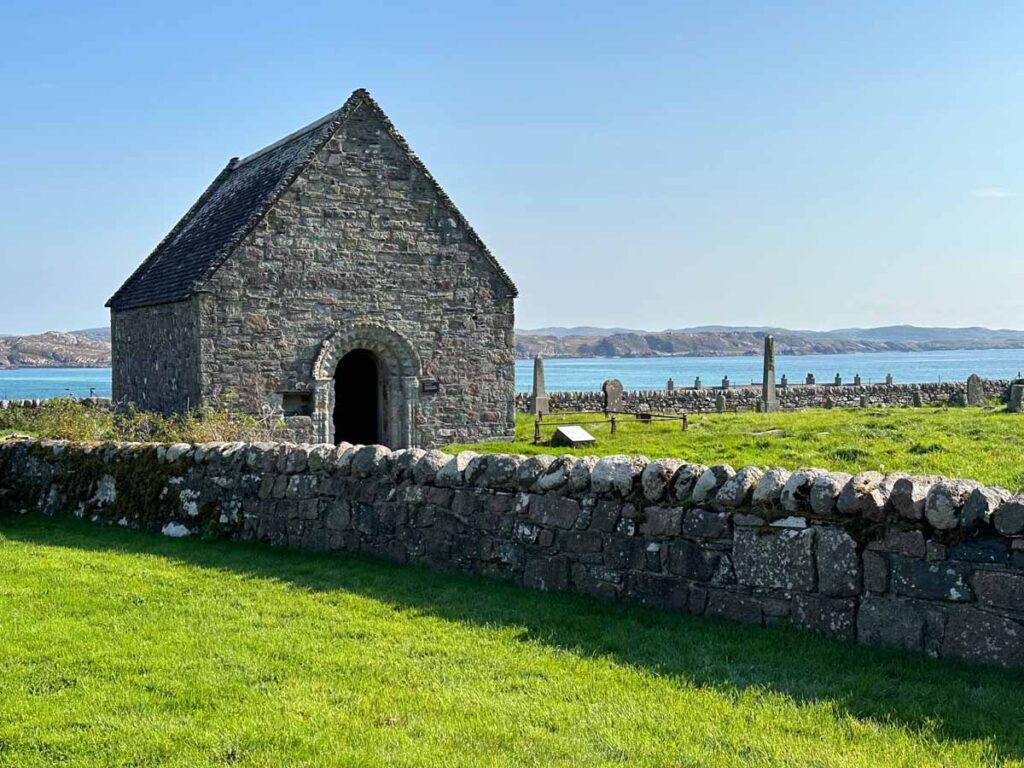

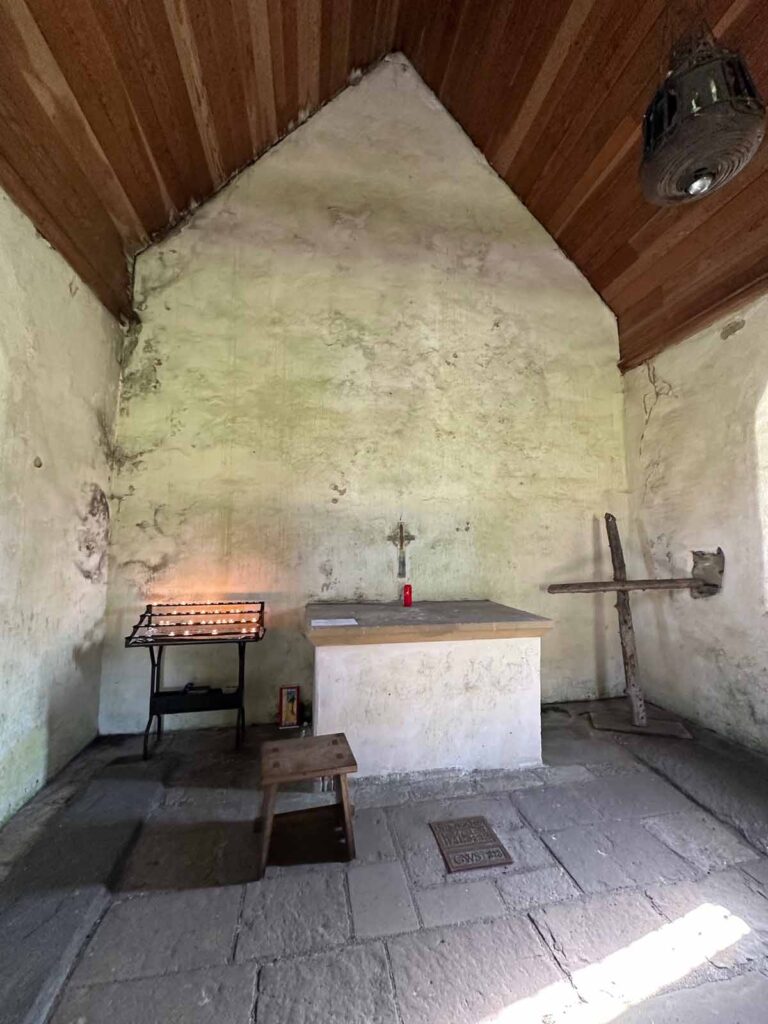
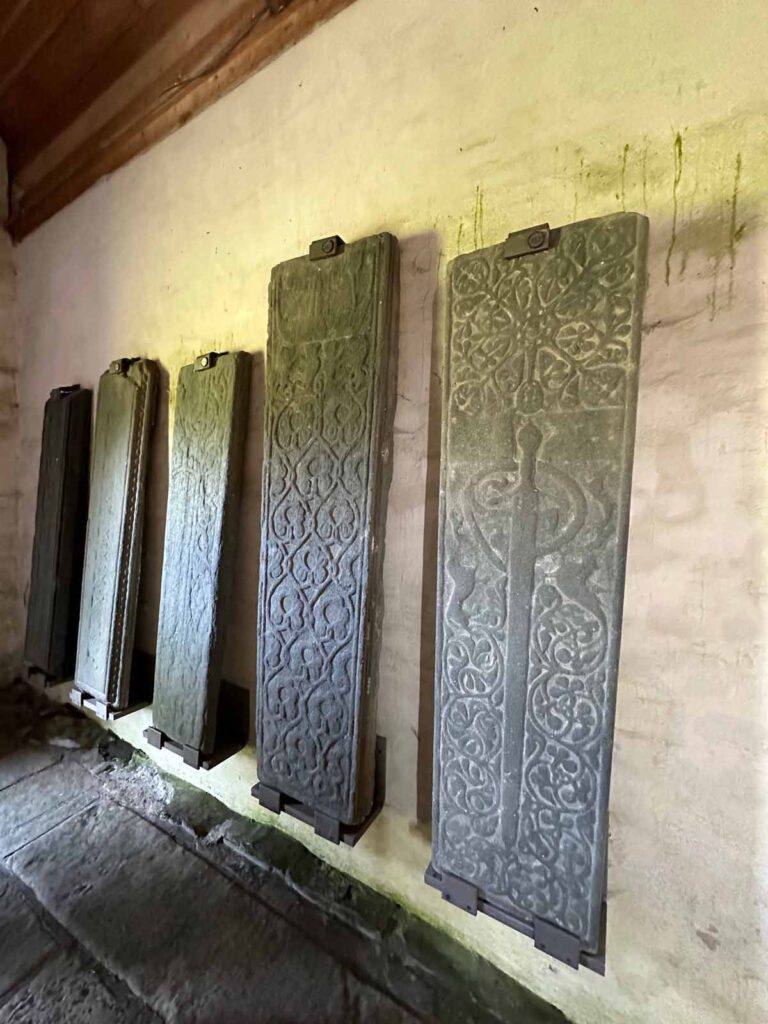

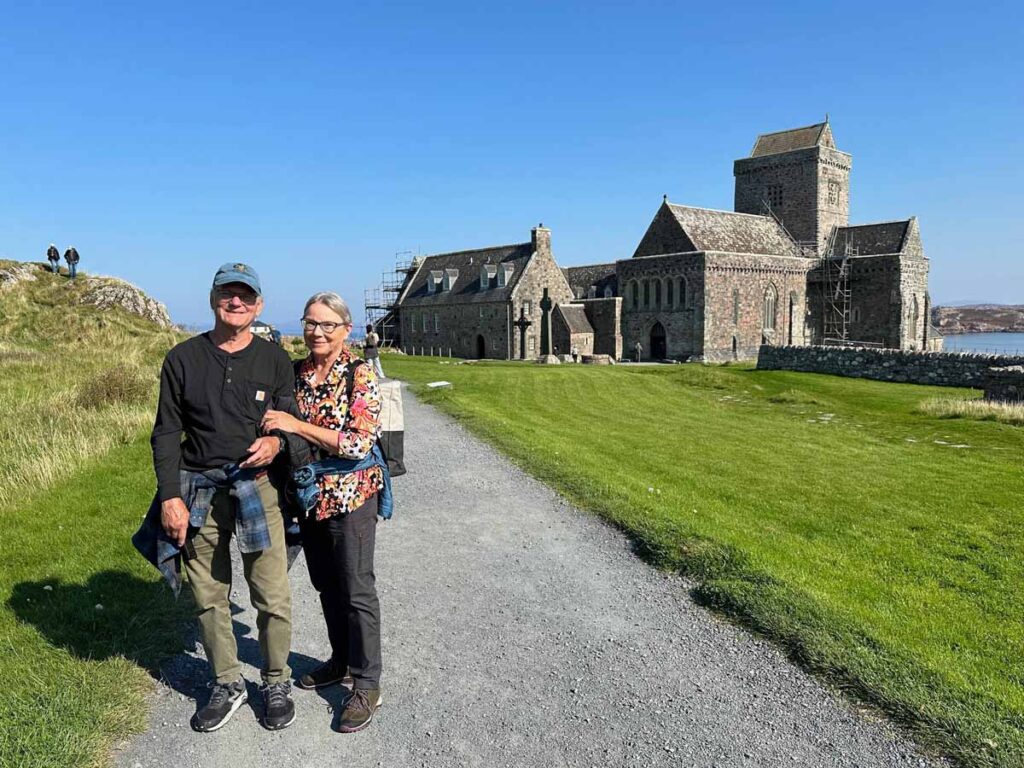
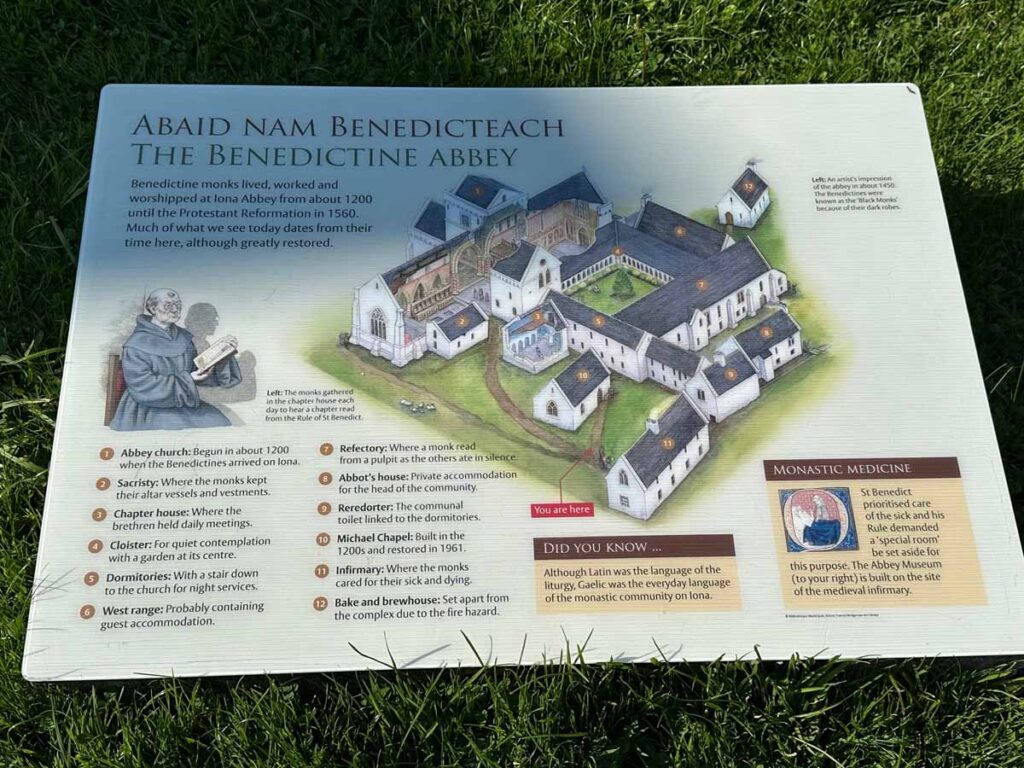
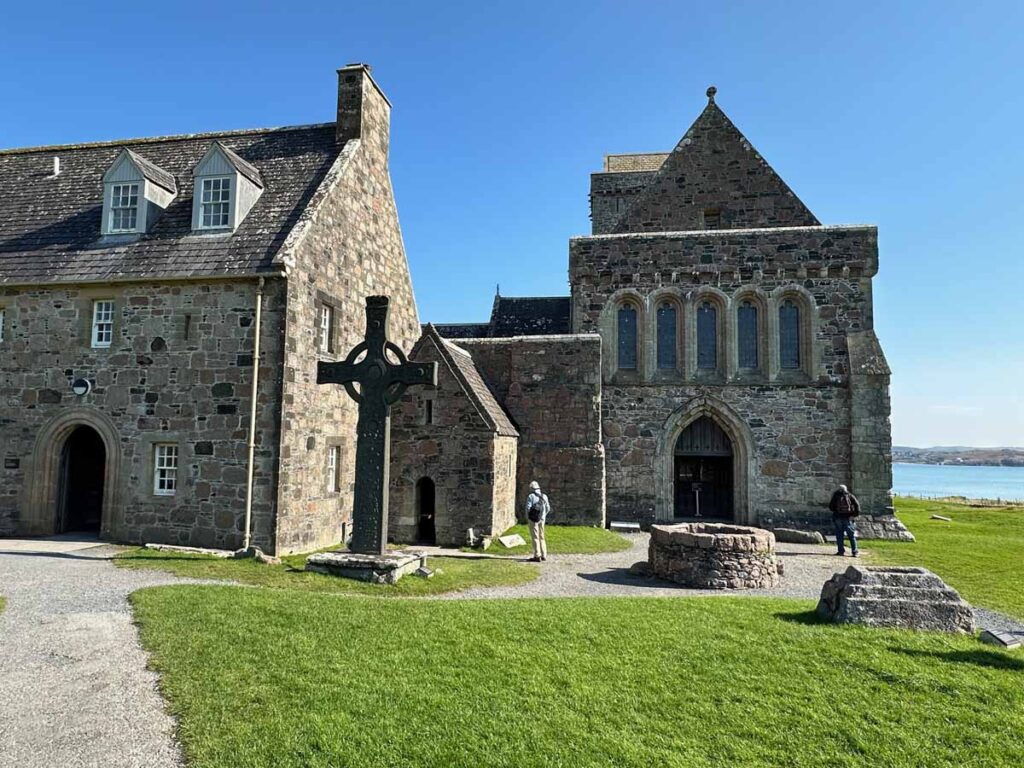

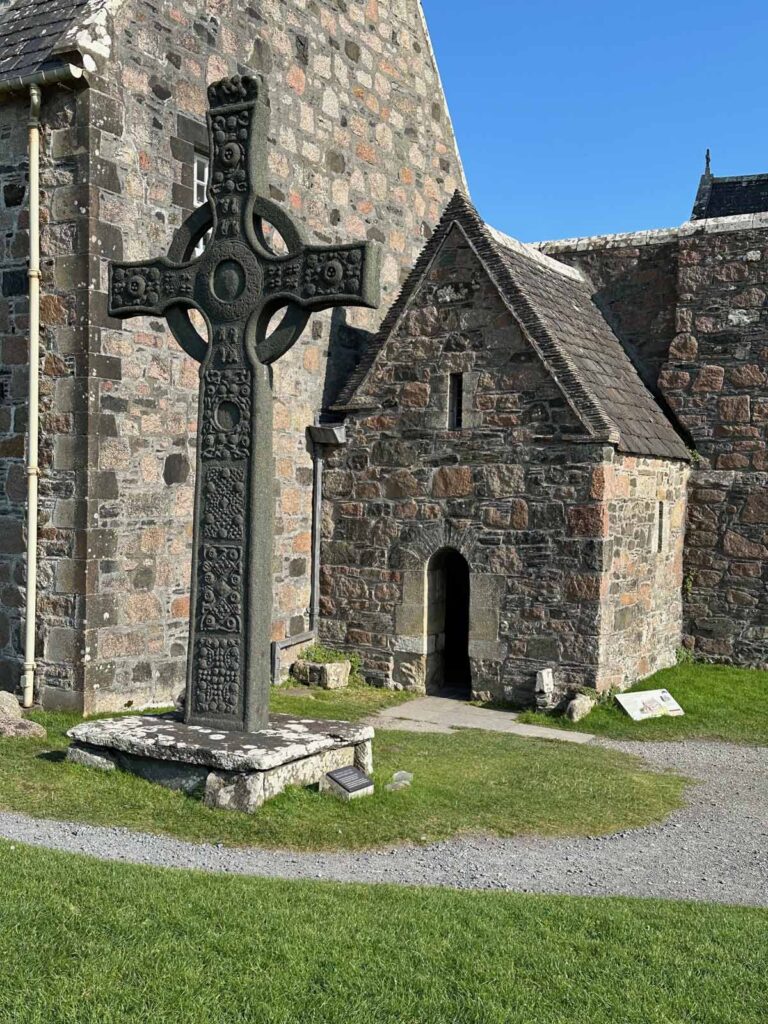
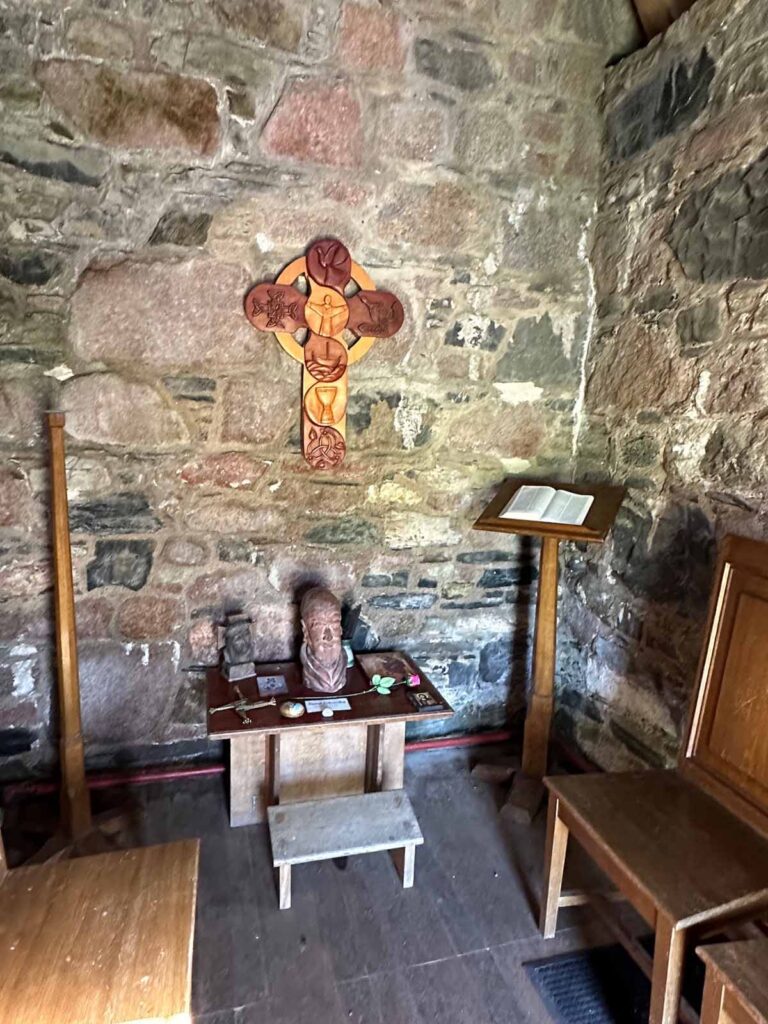
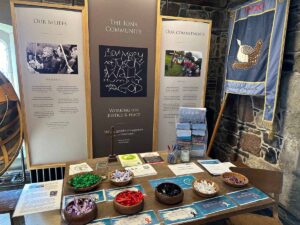

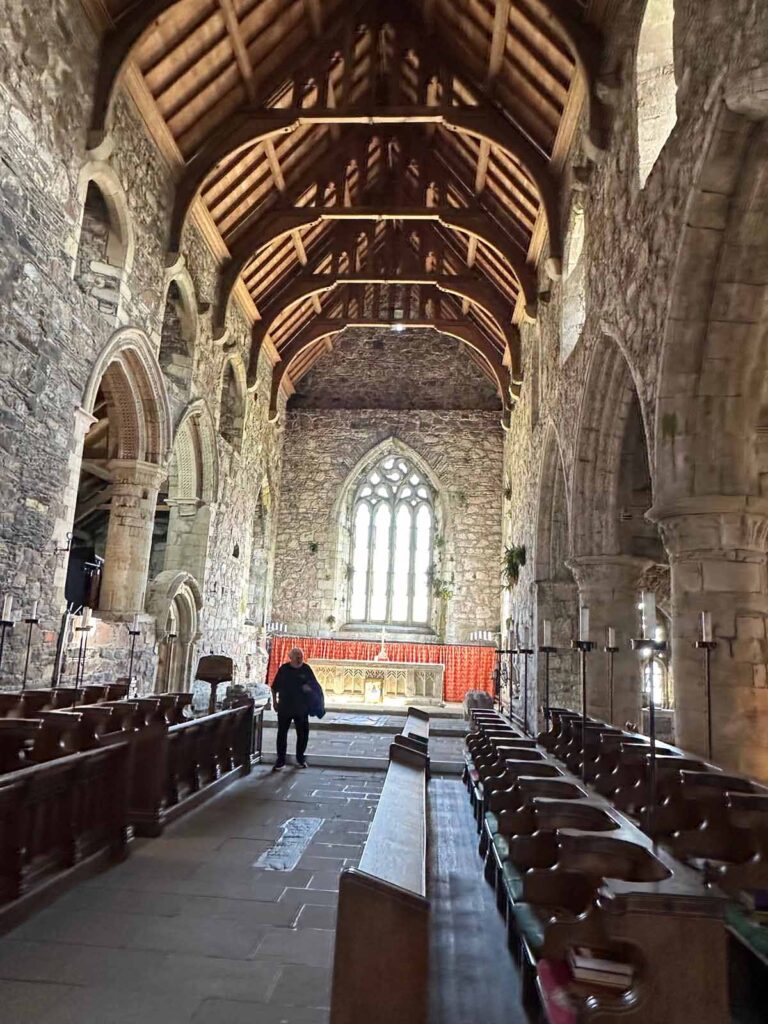
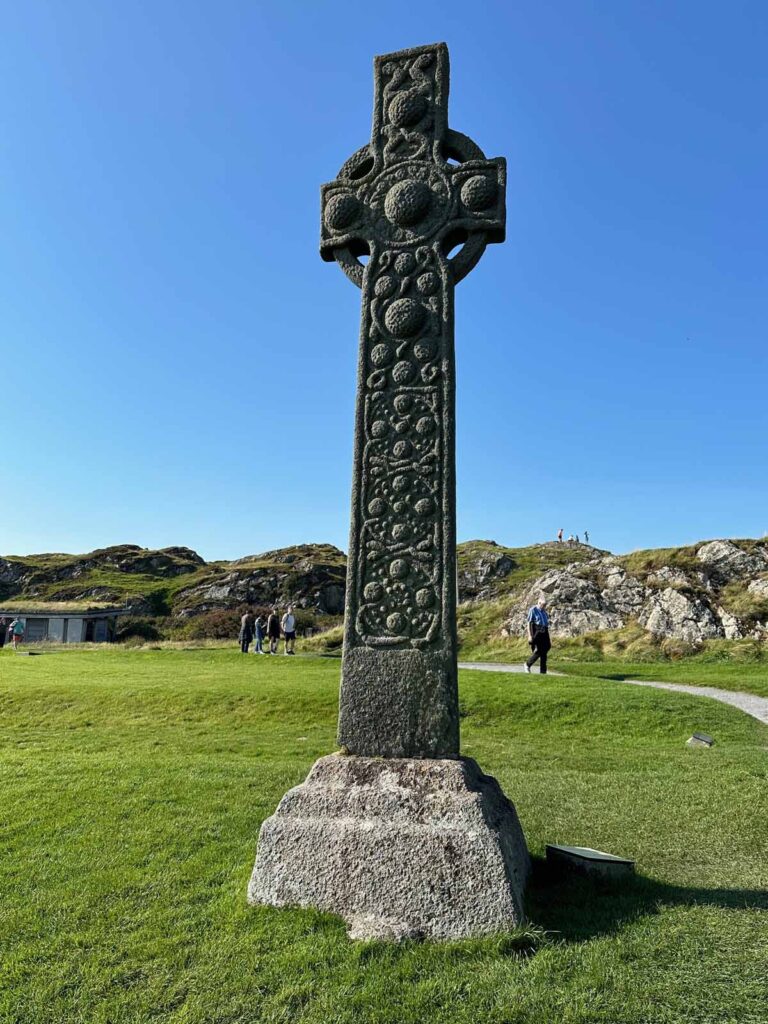
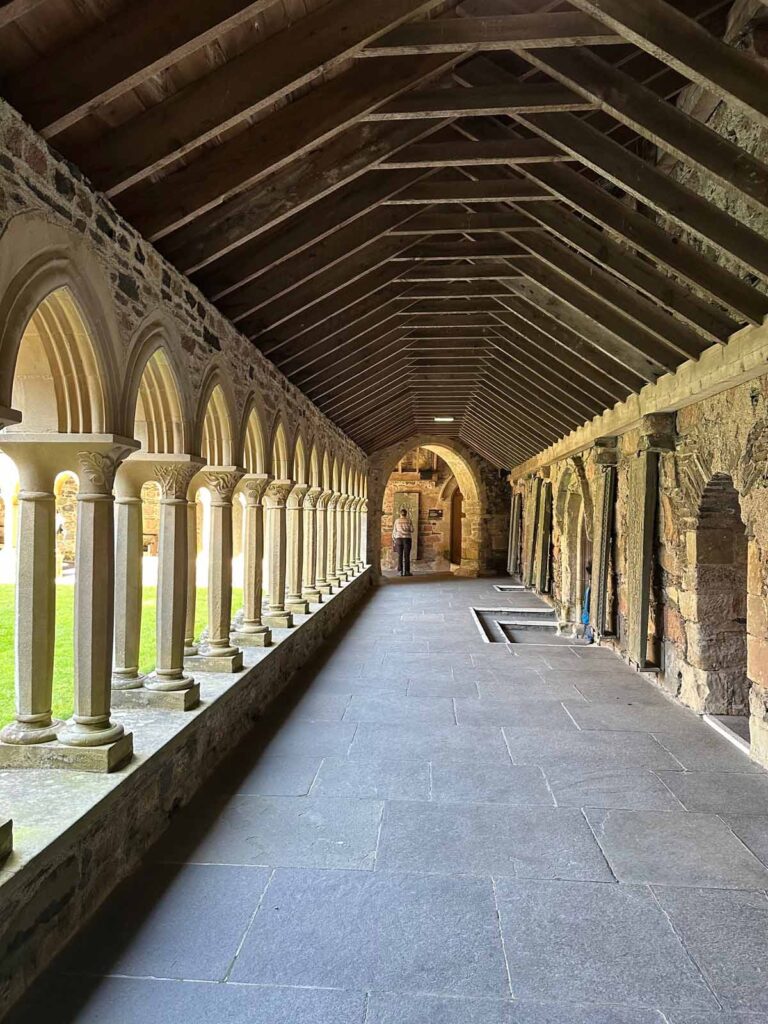
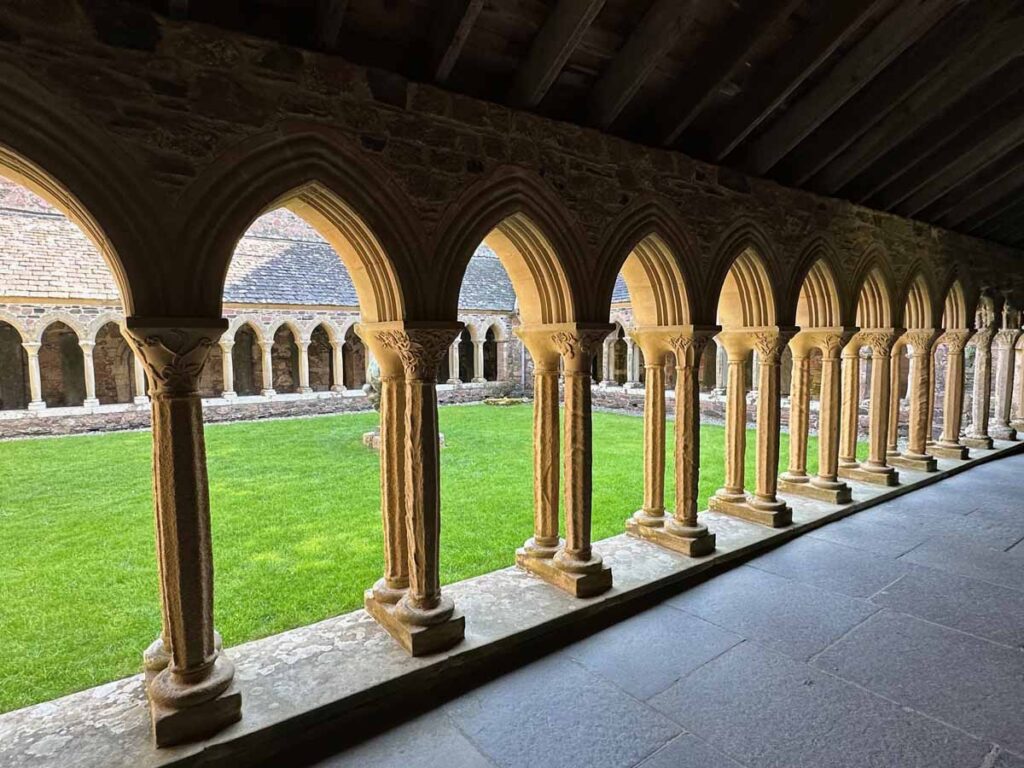



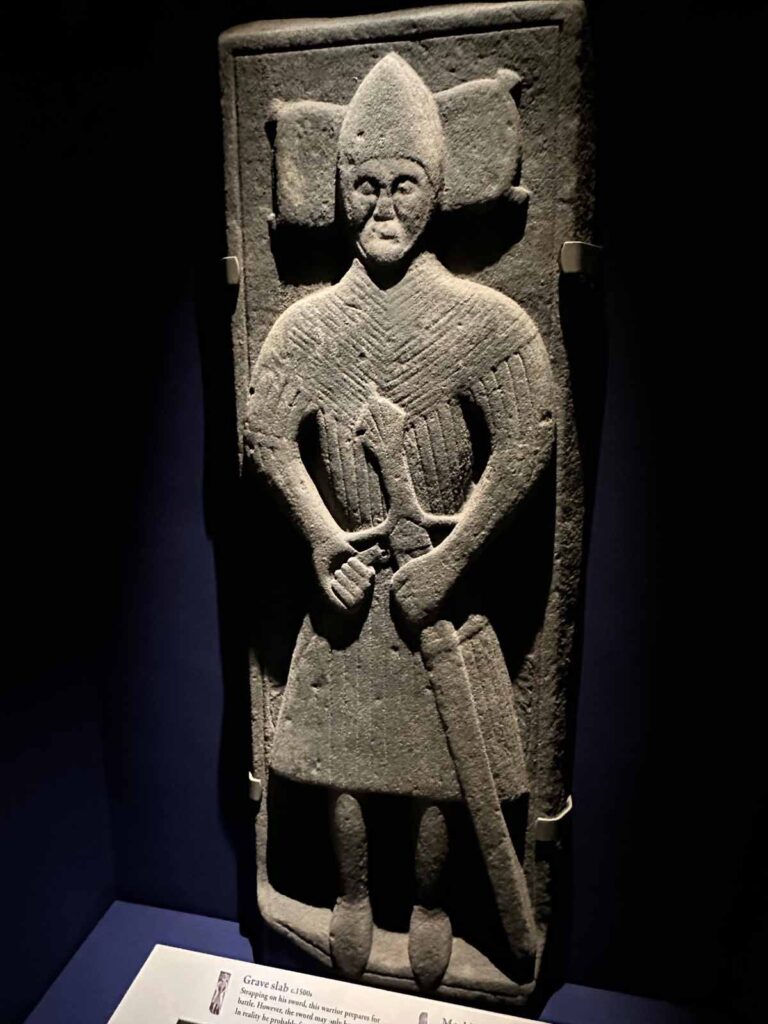

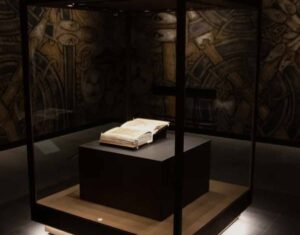


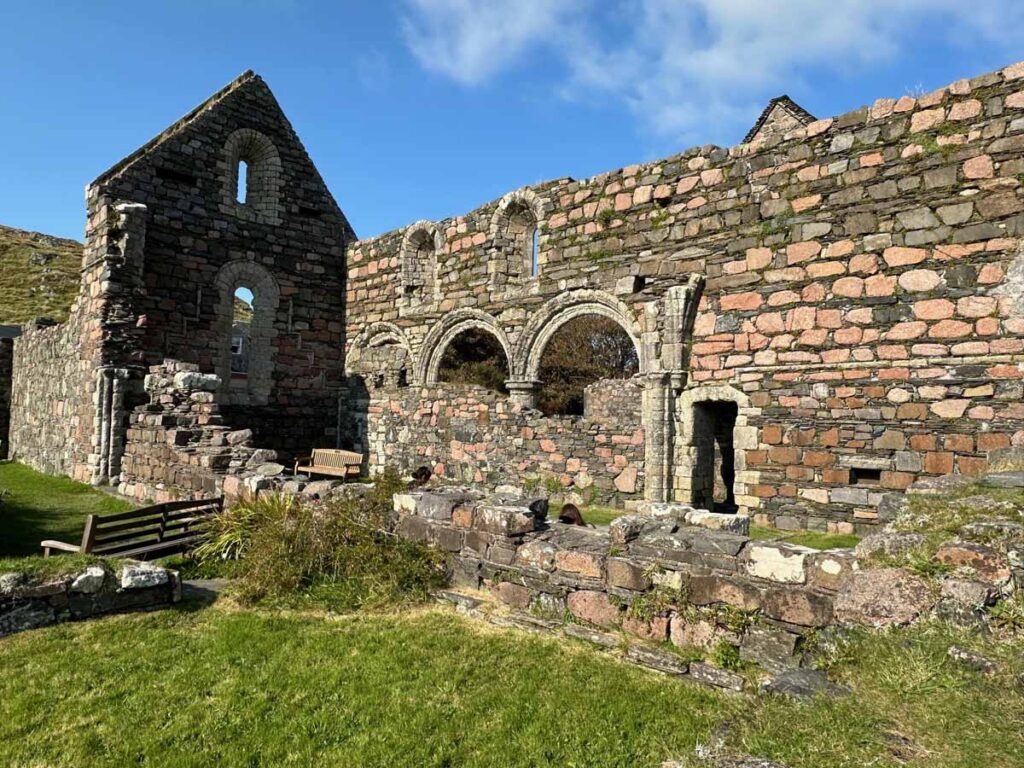
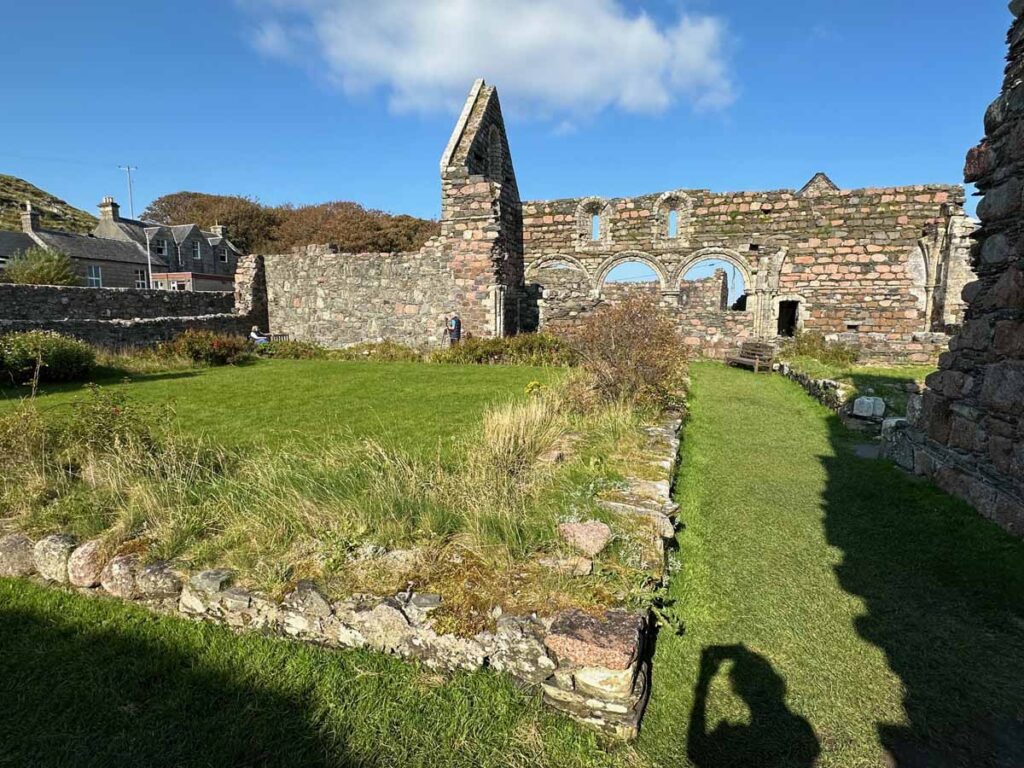

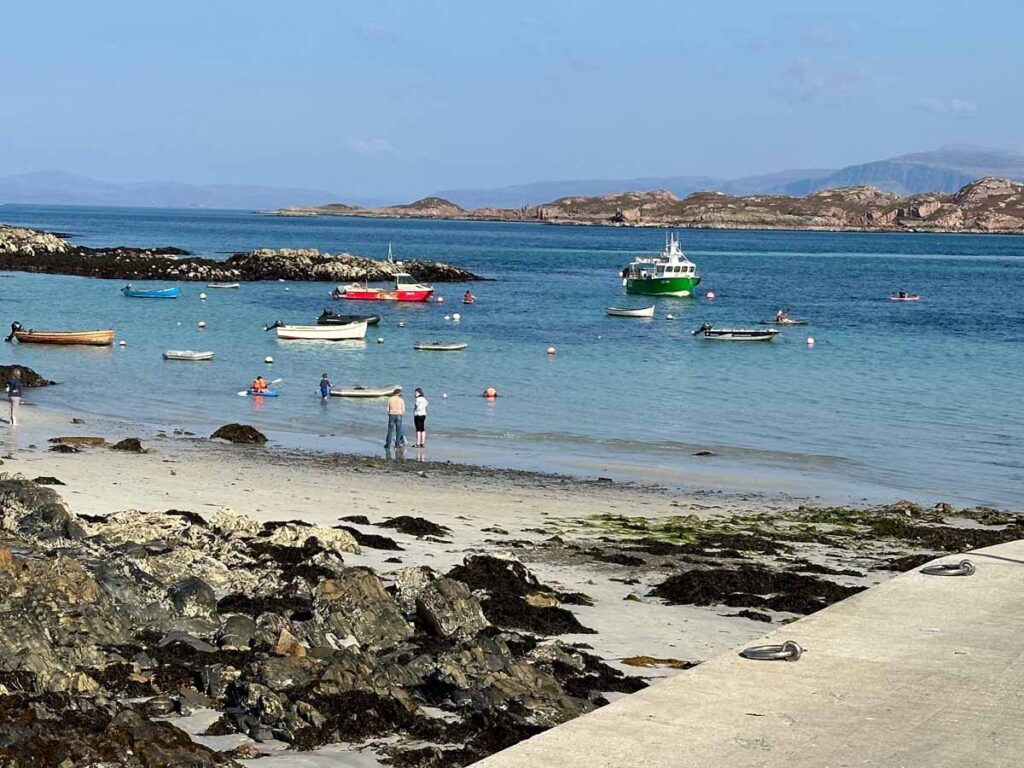

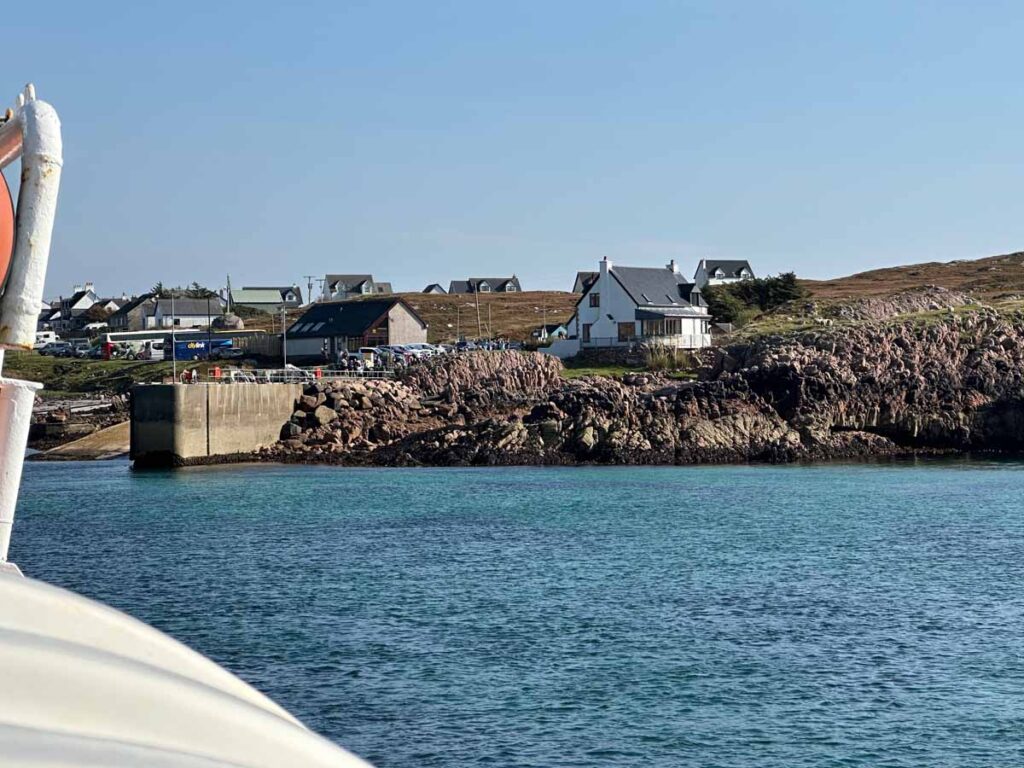
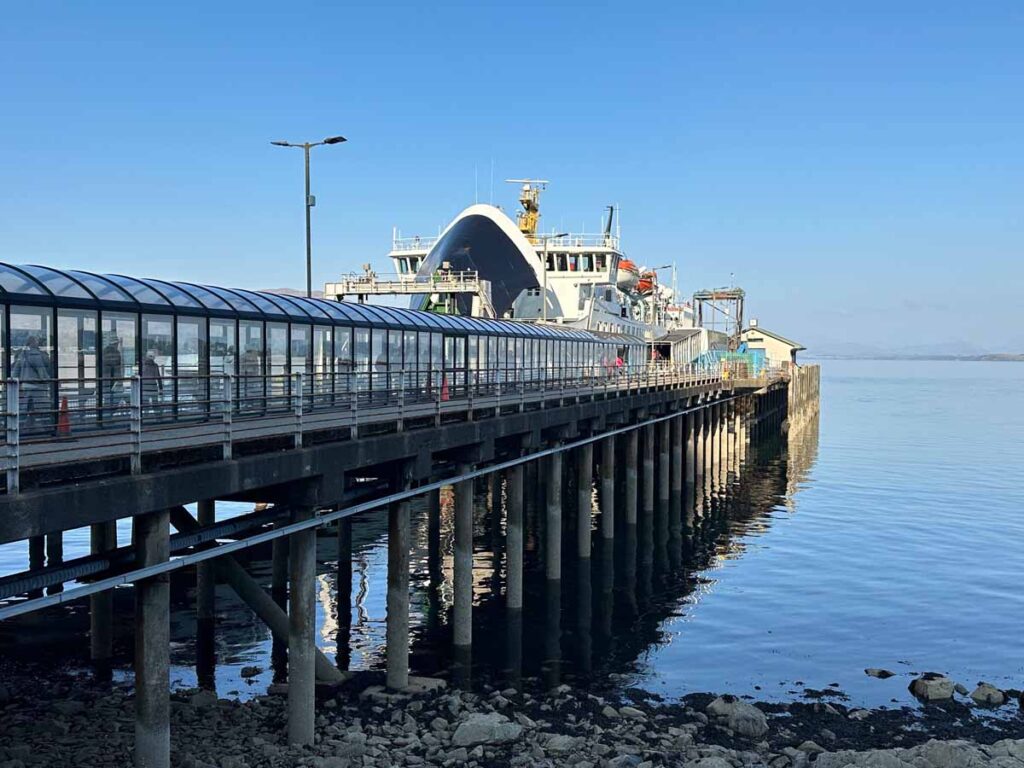
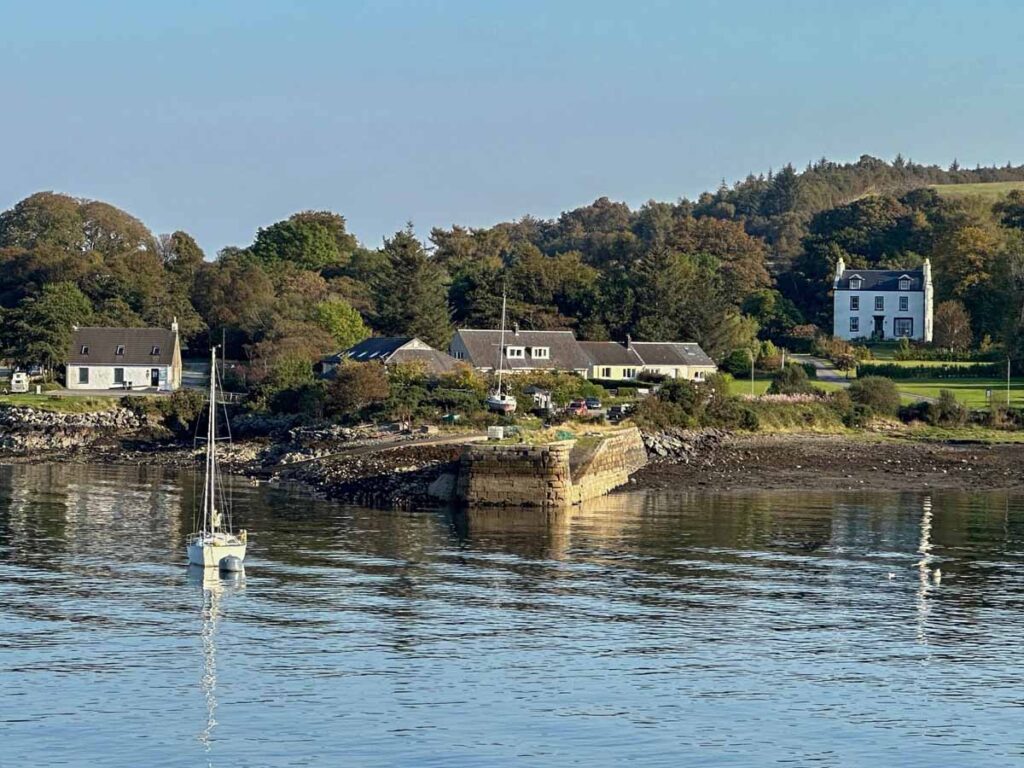
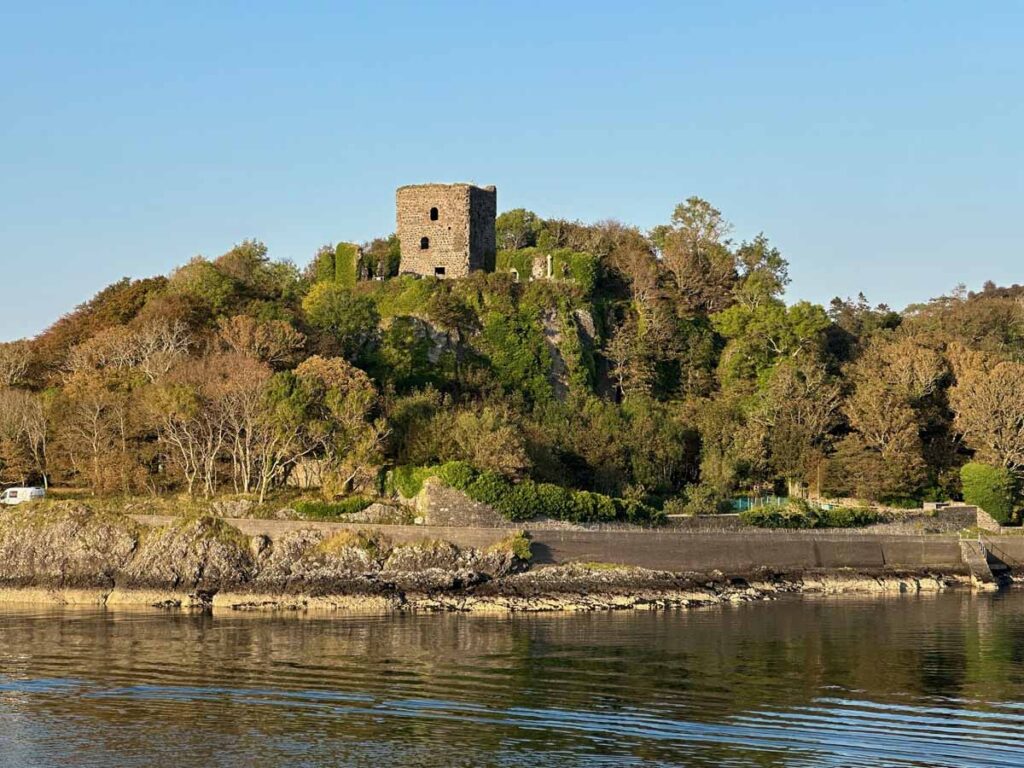
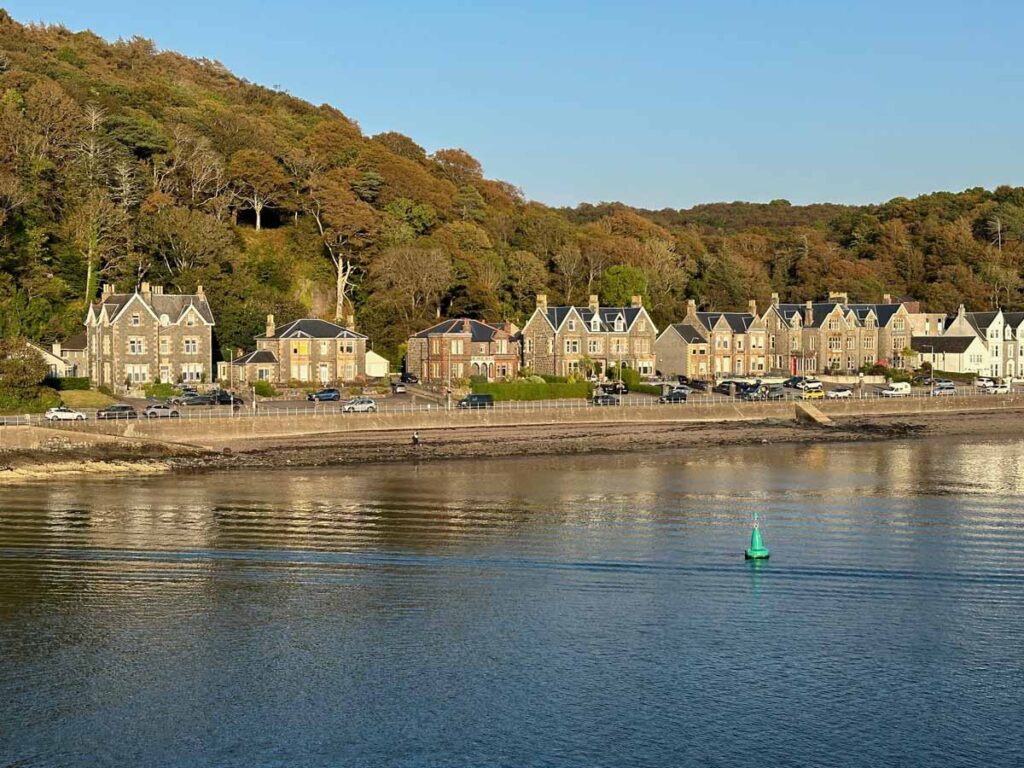
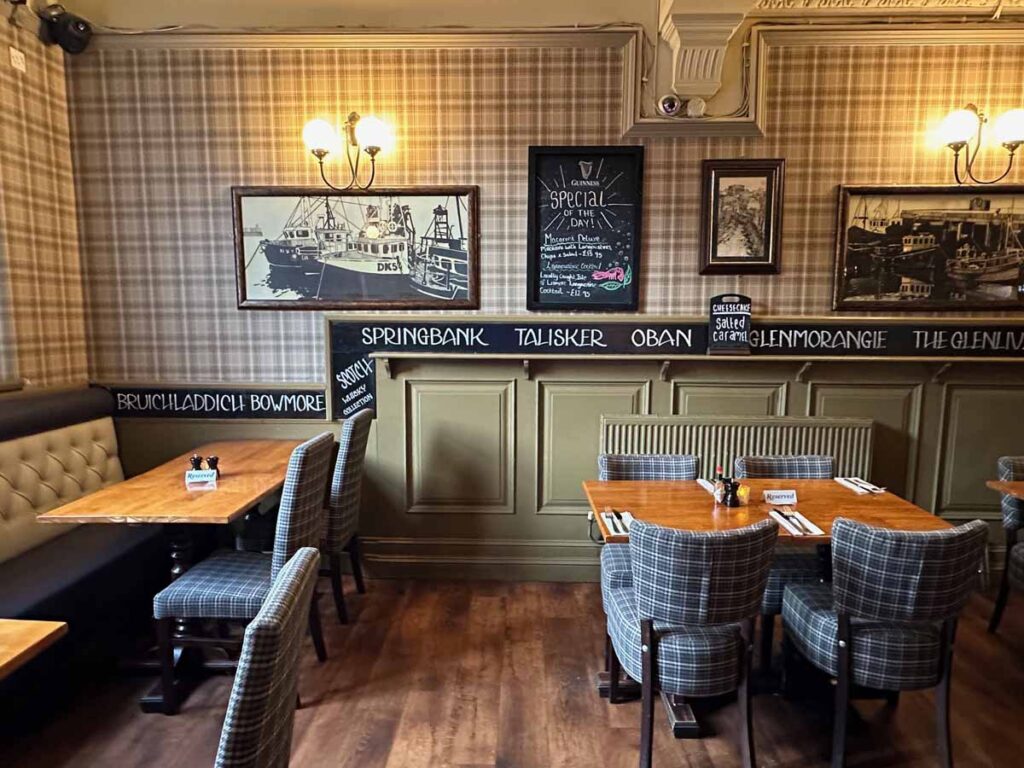
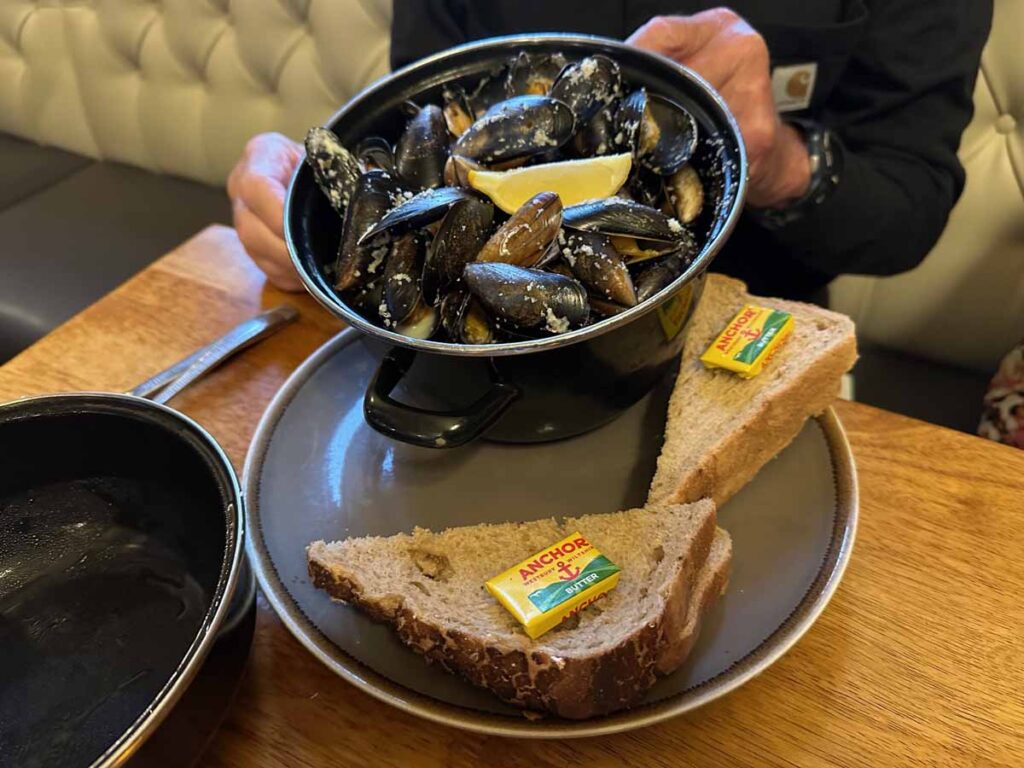


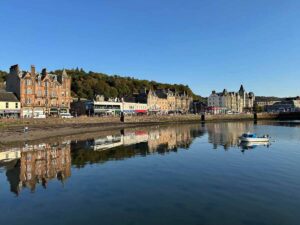



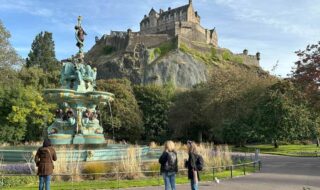
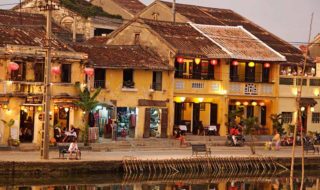
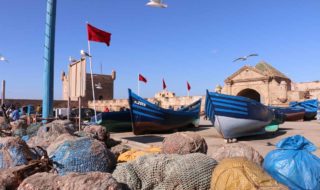

Post a Comment